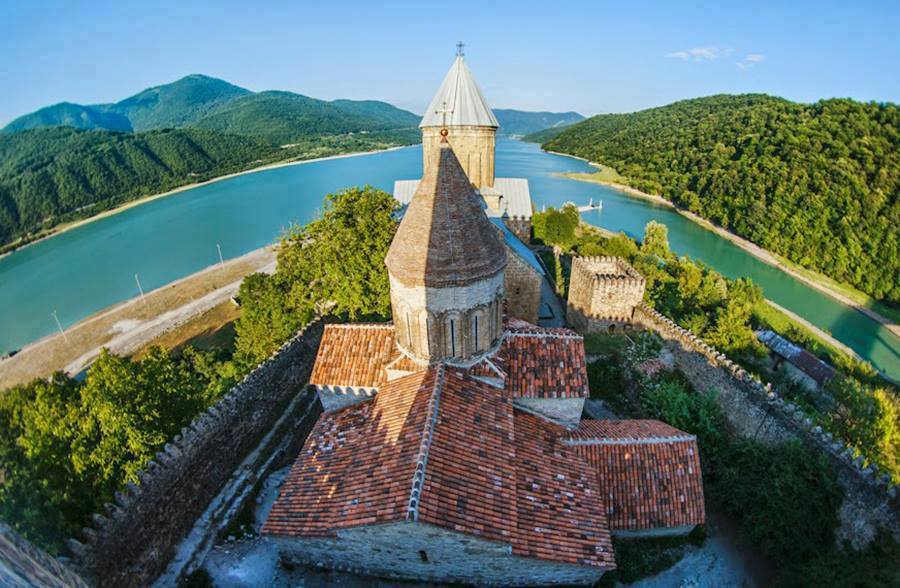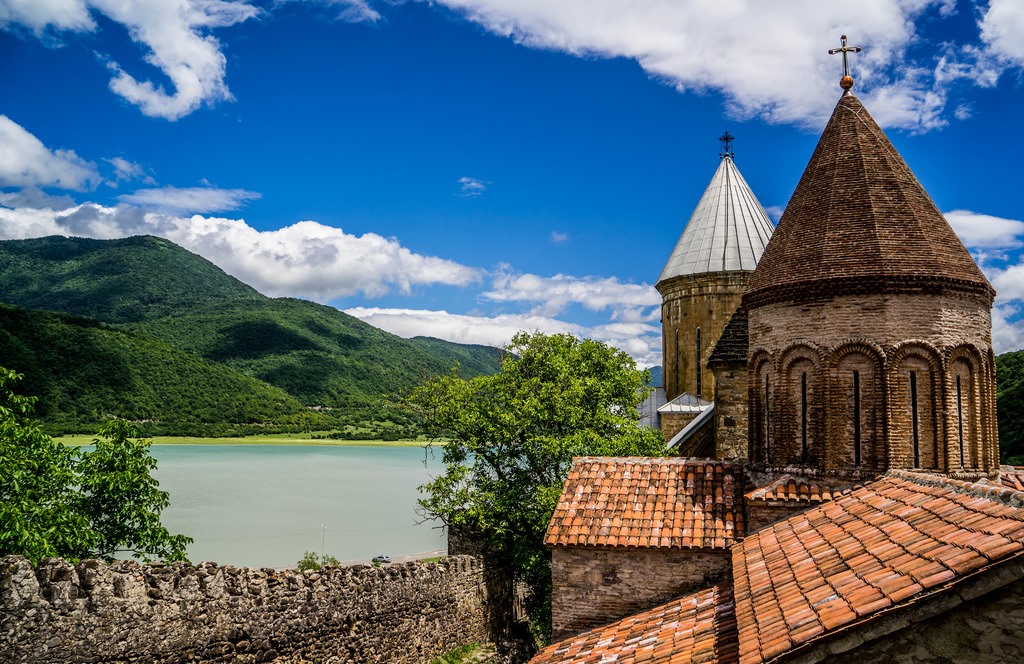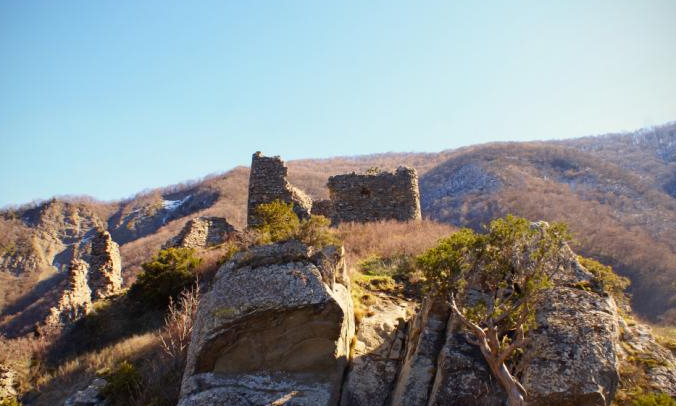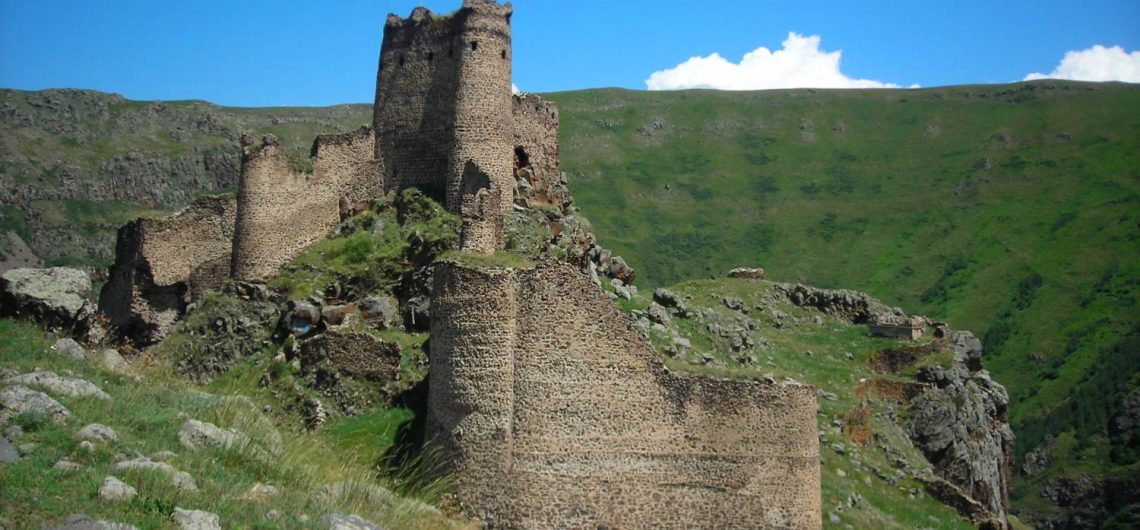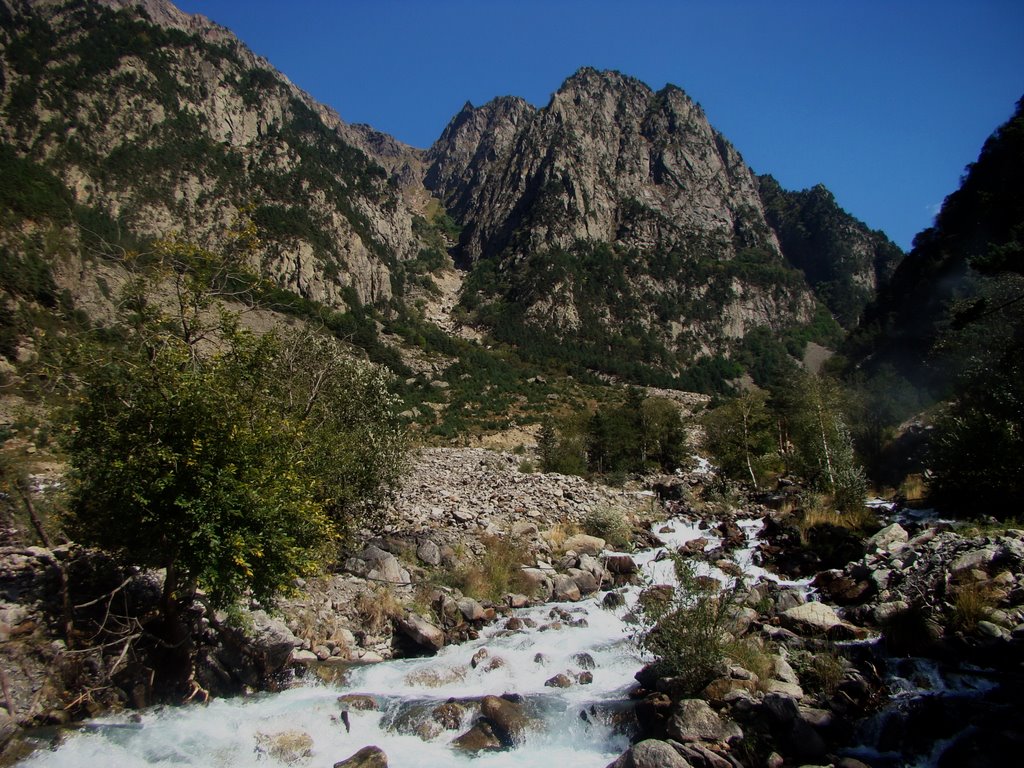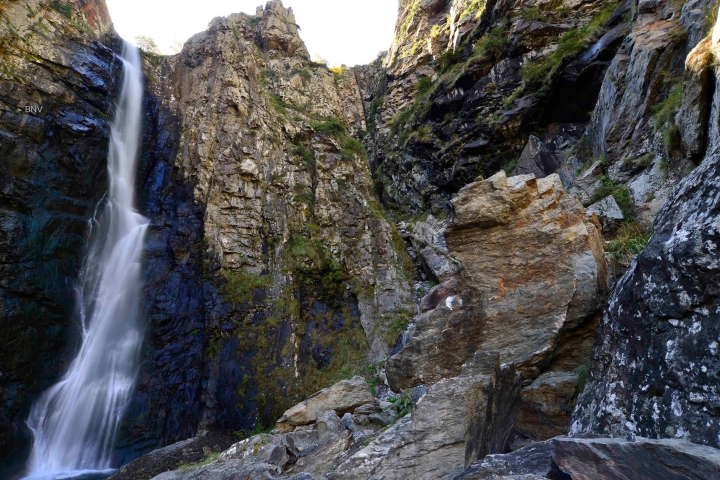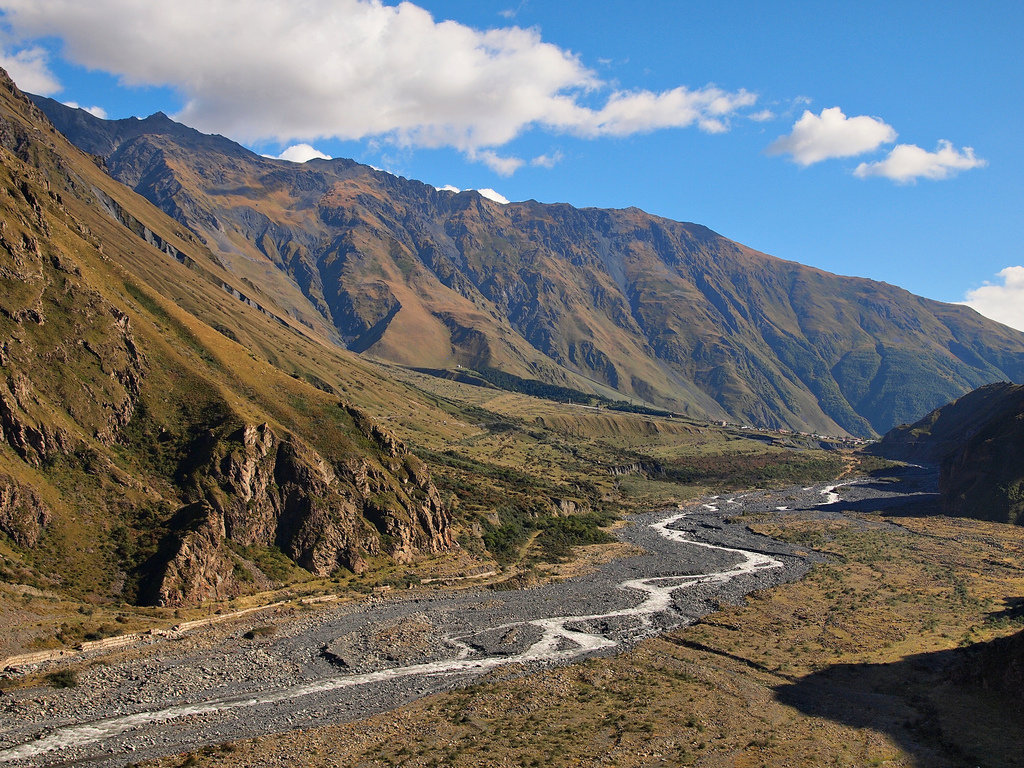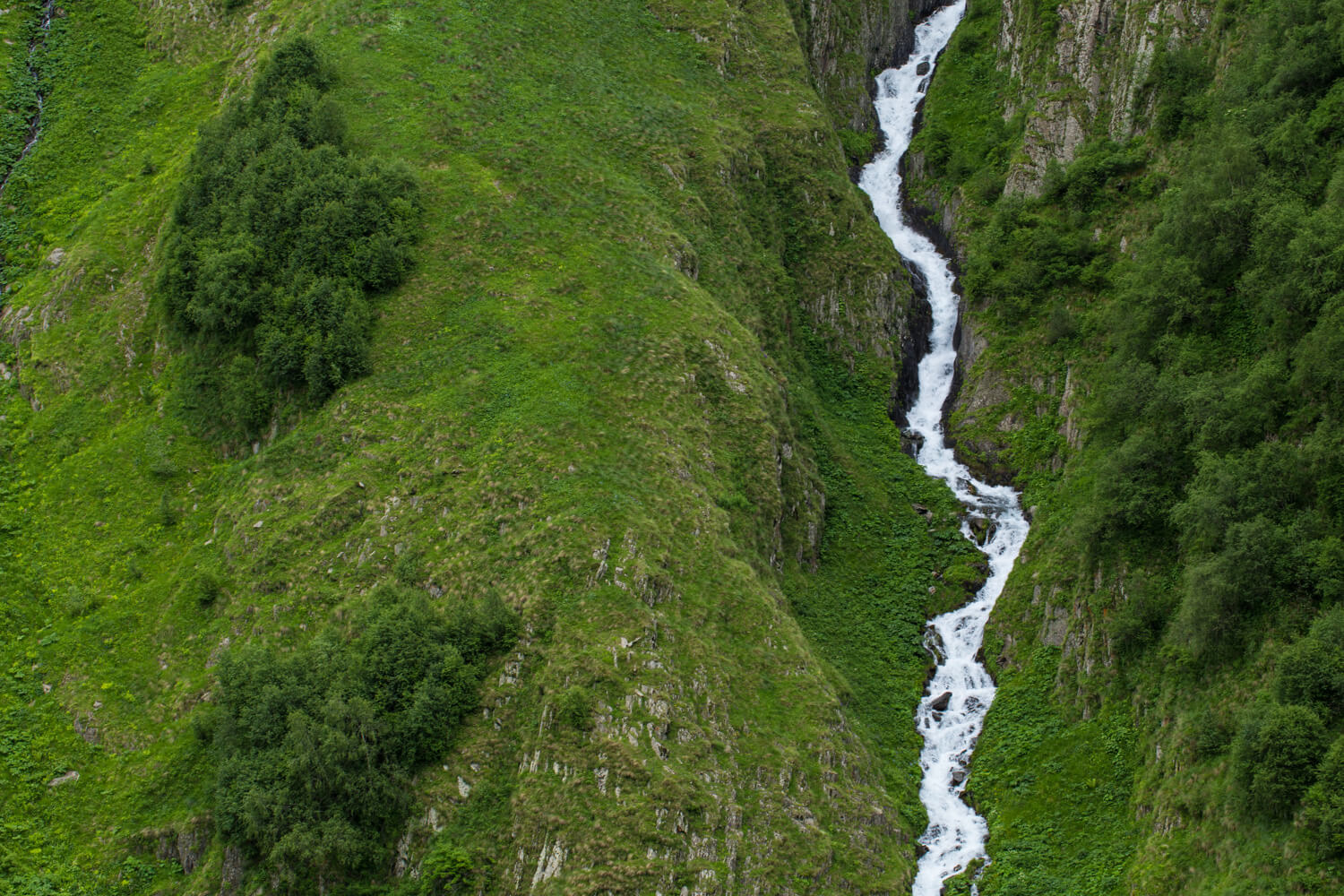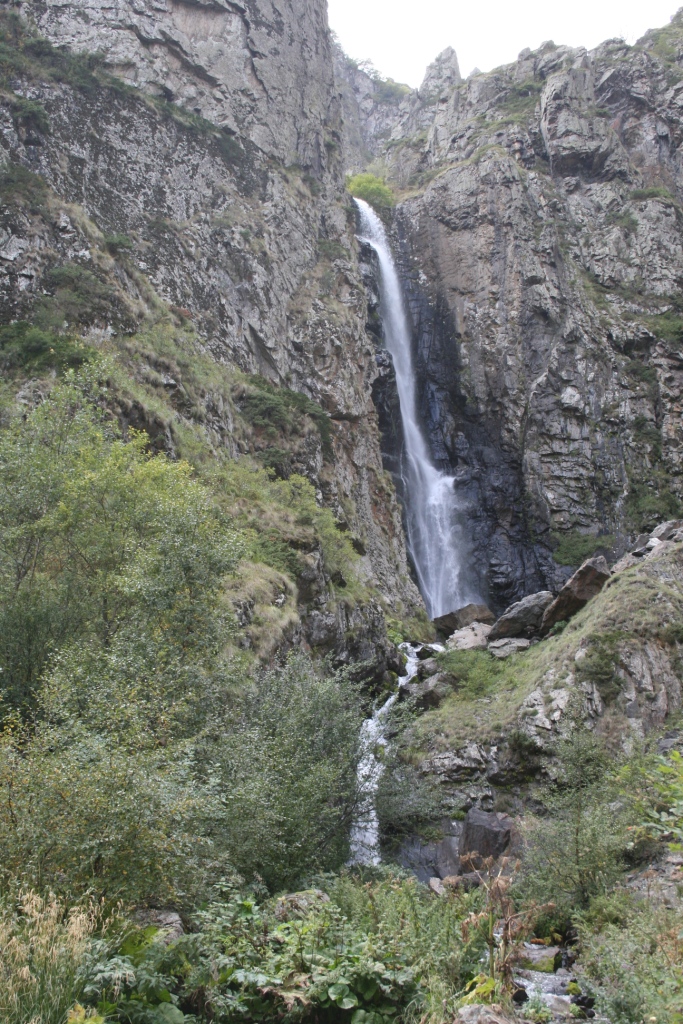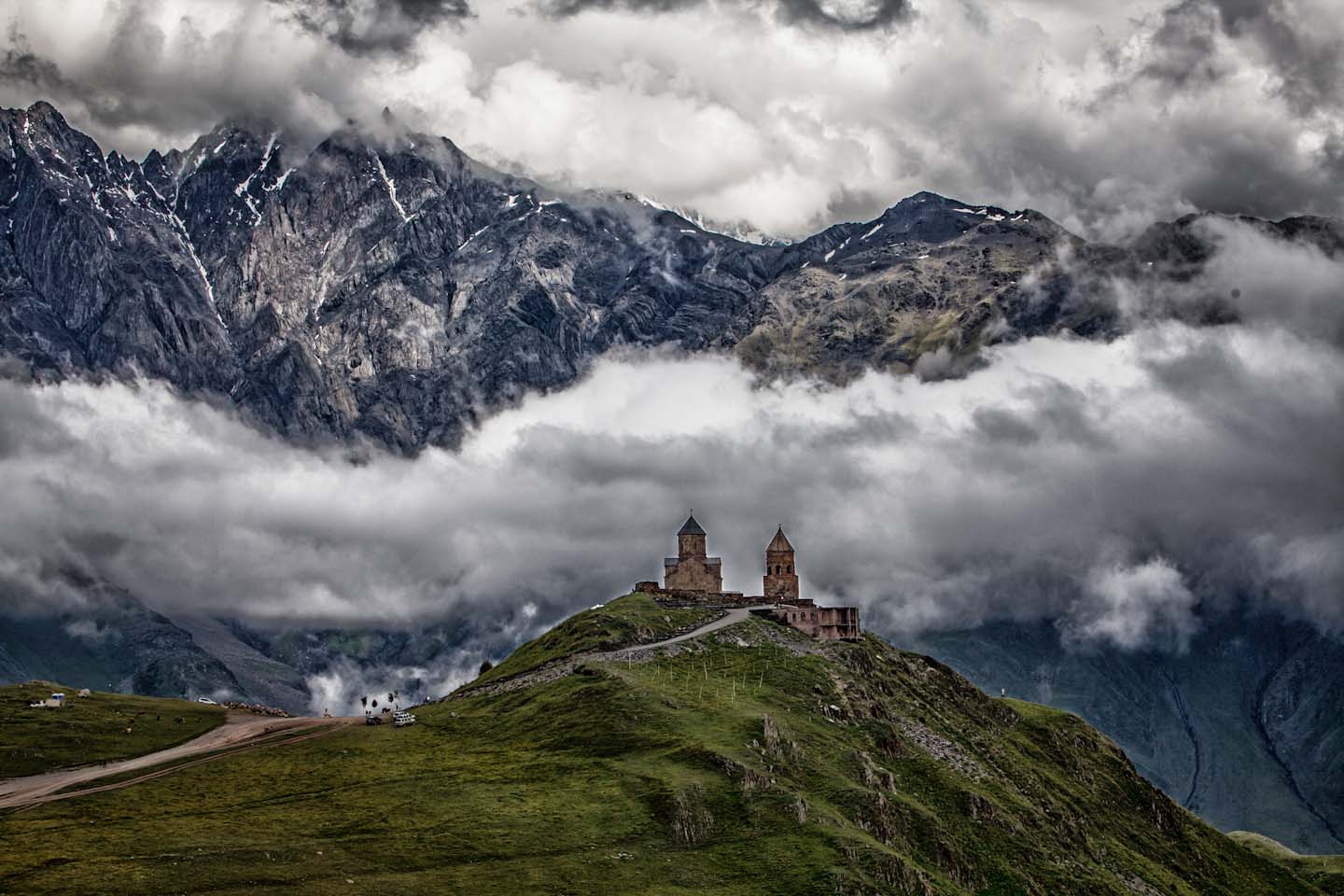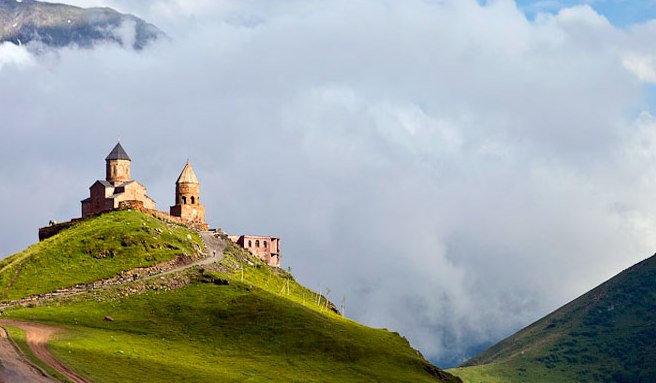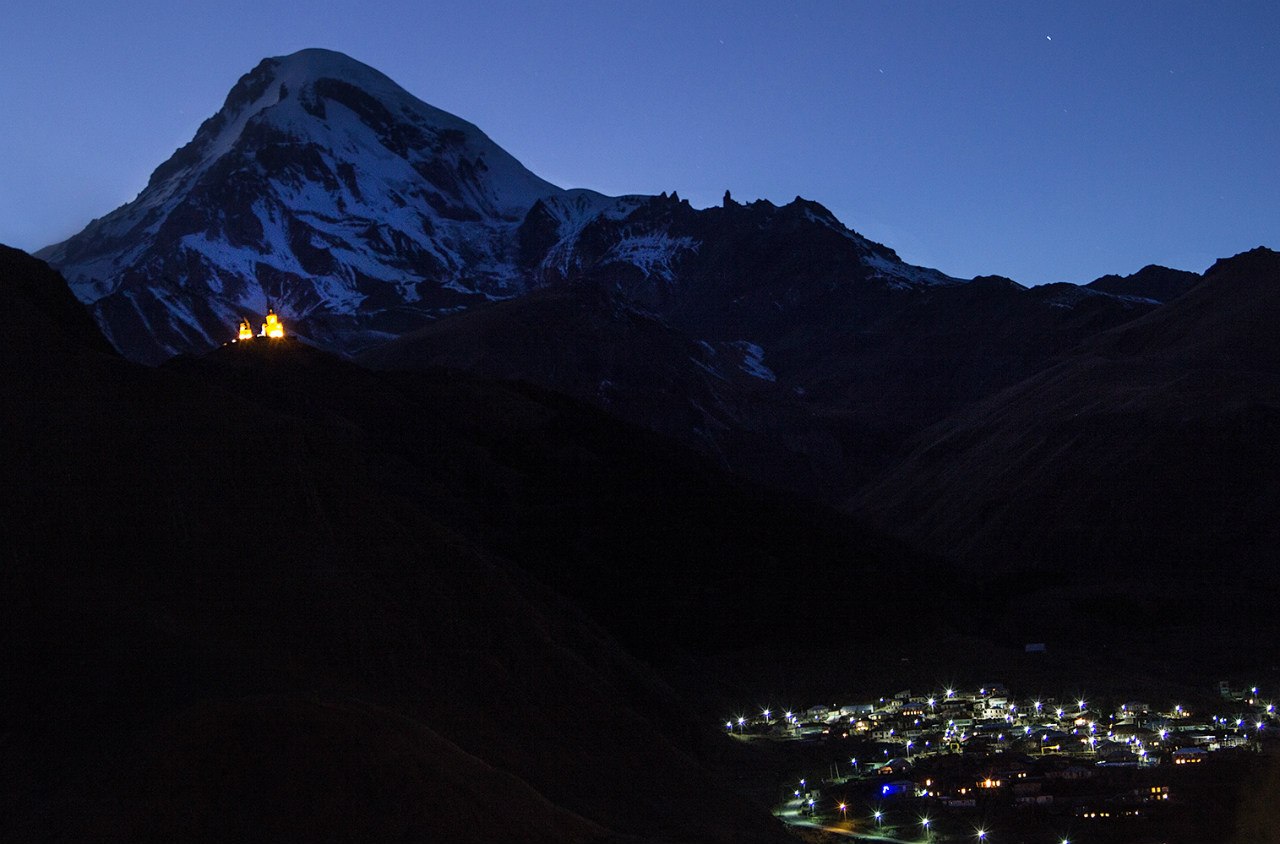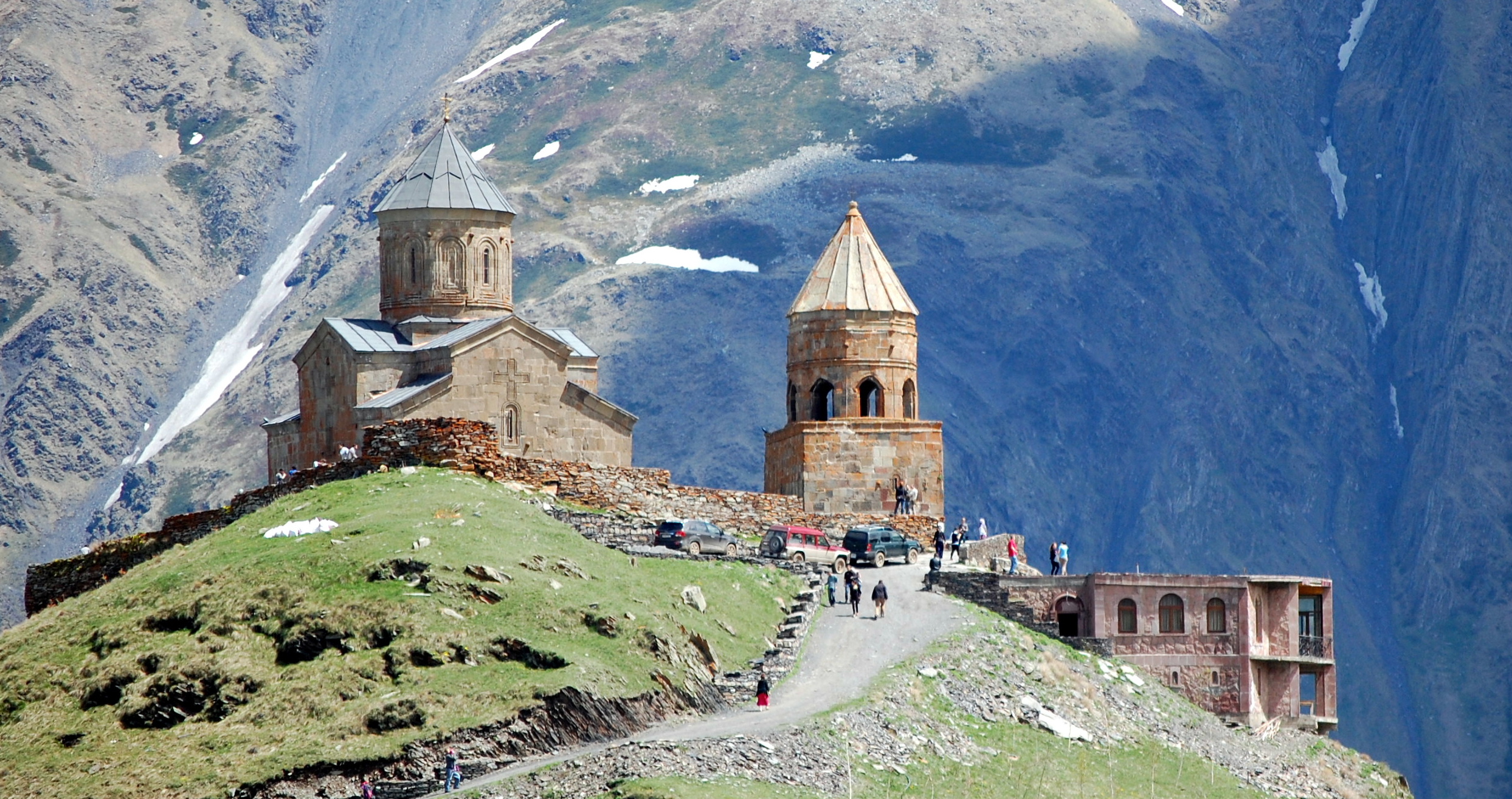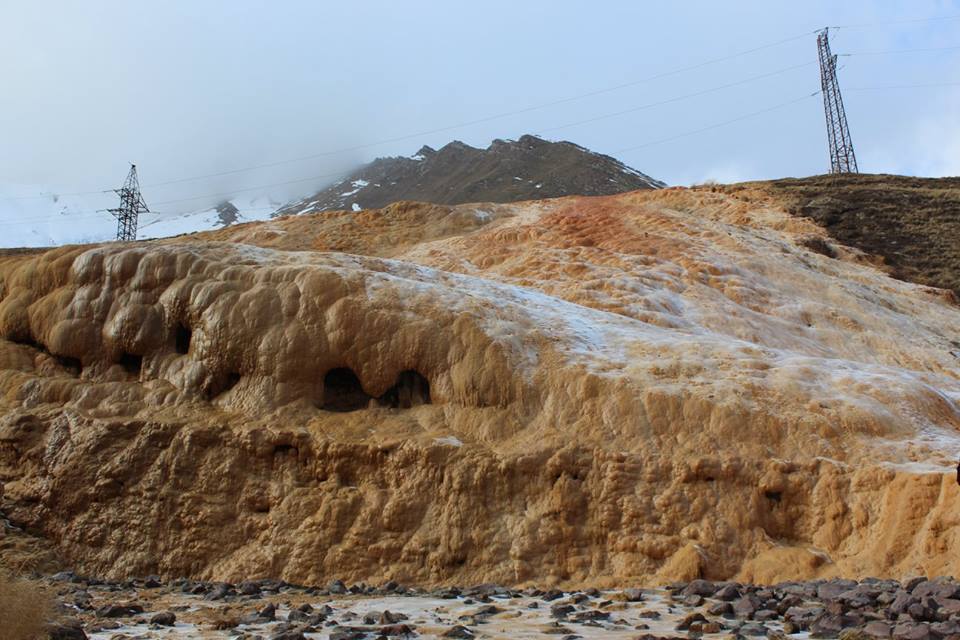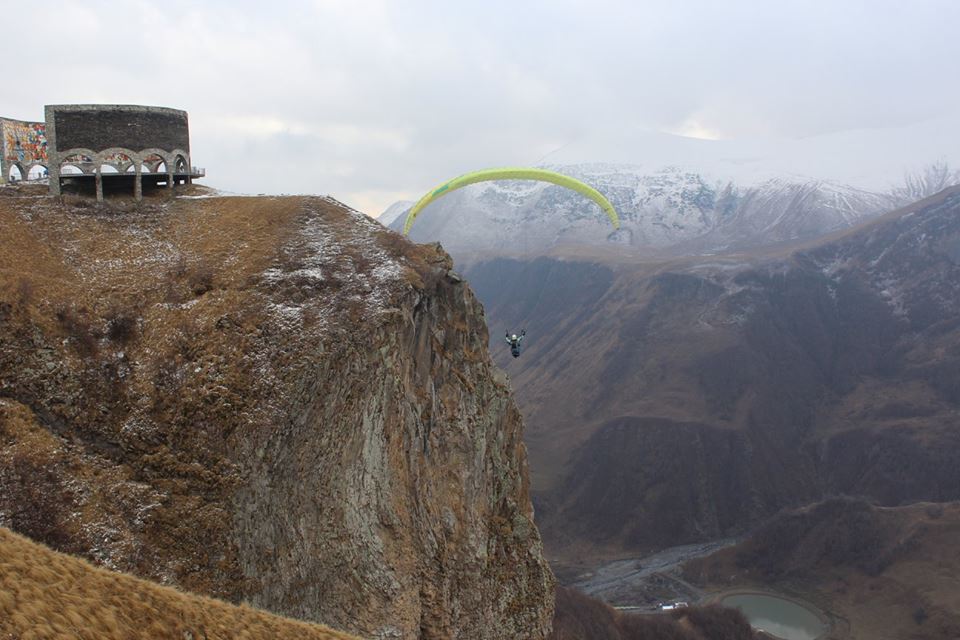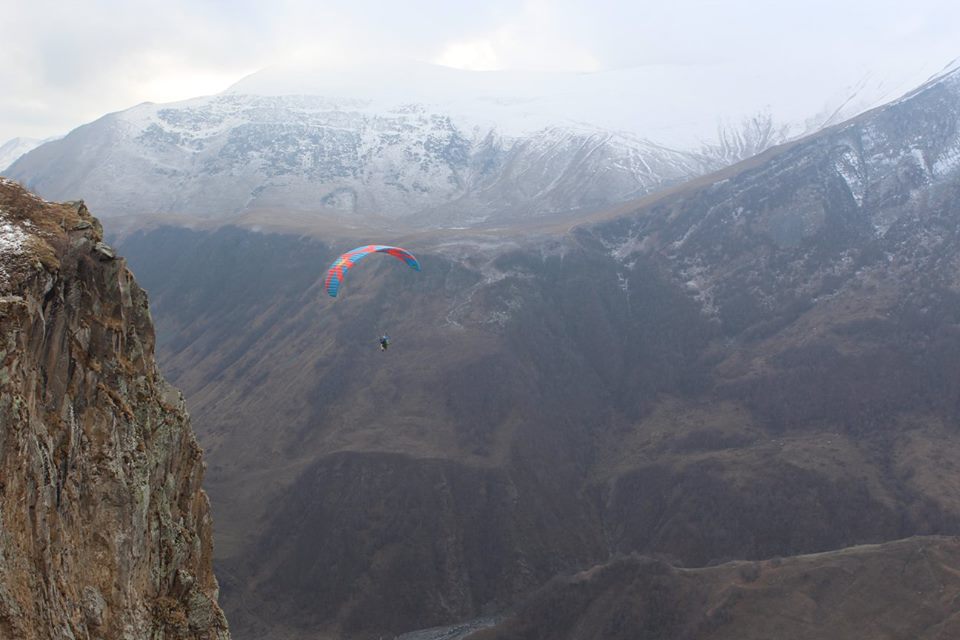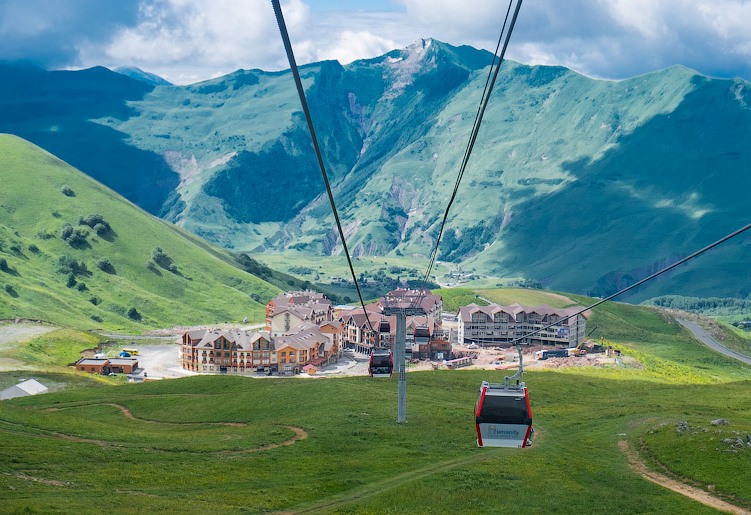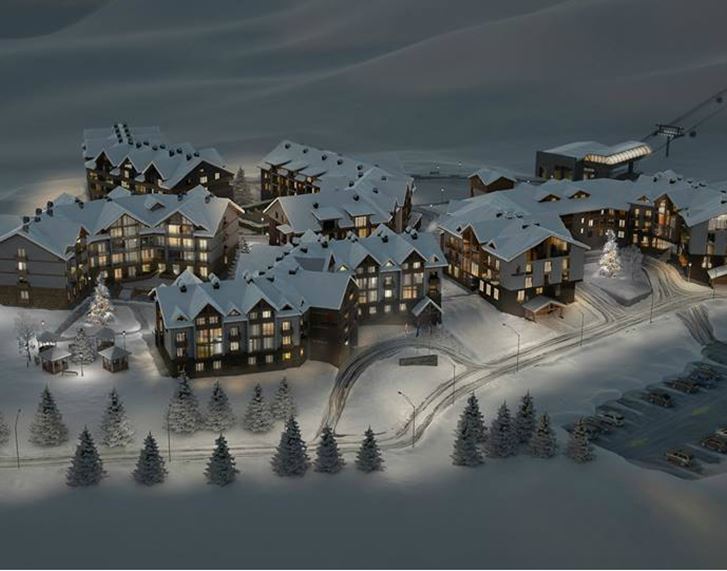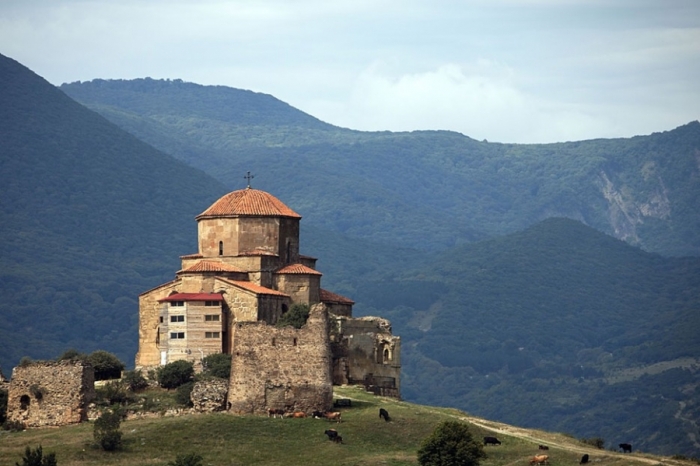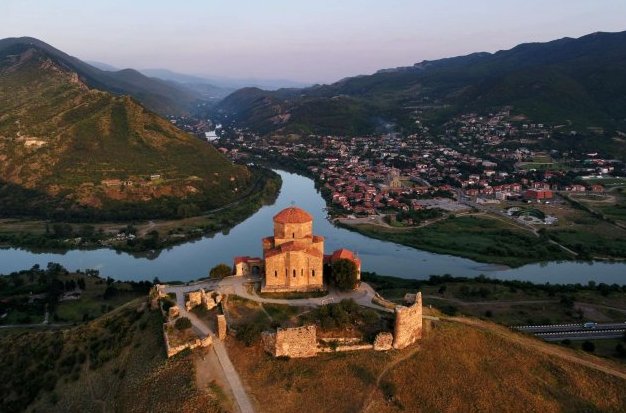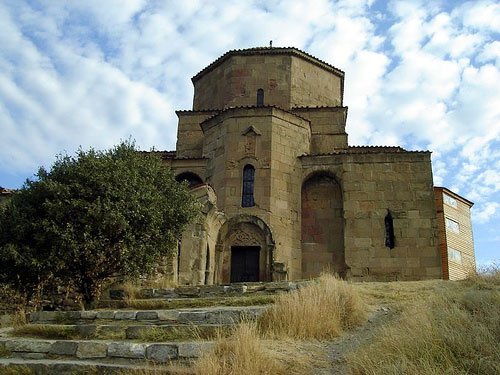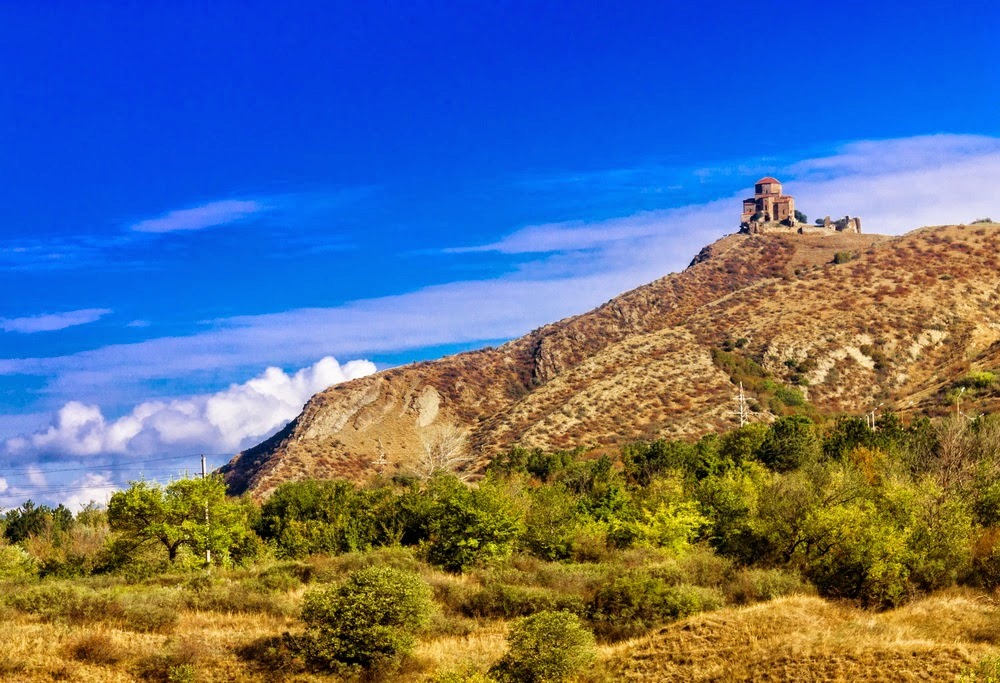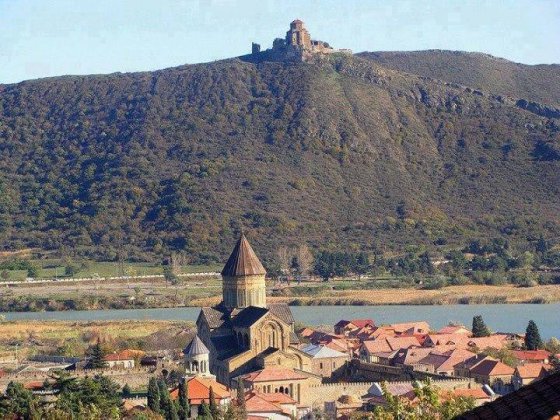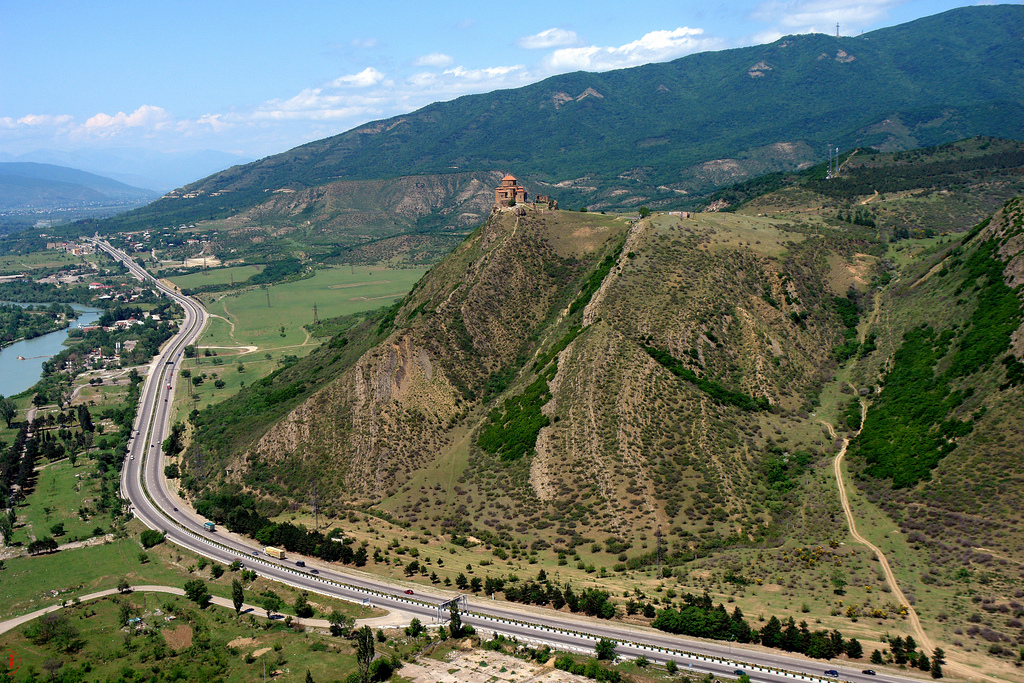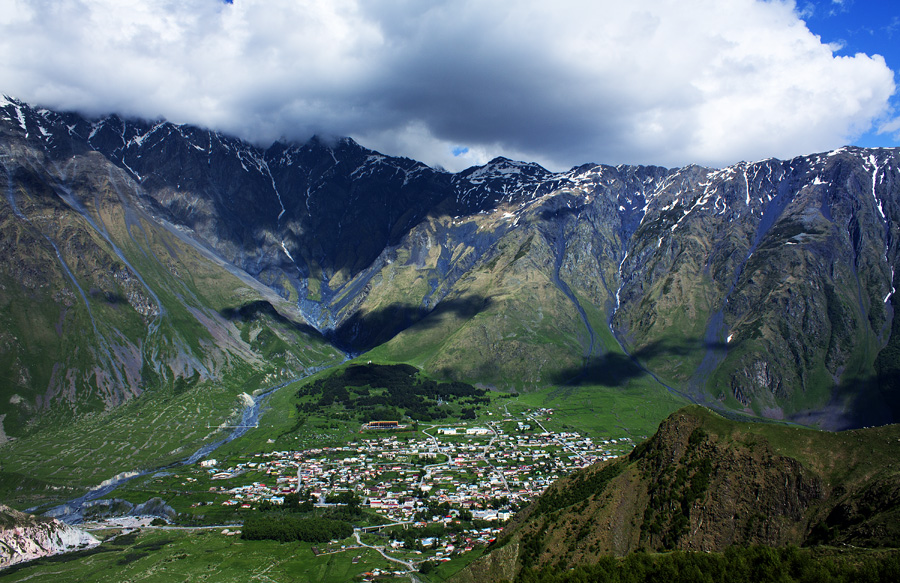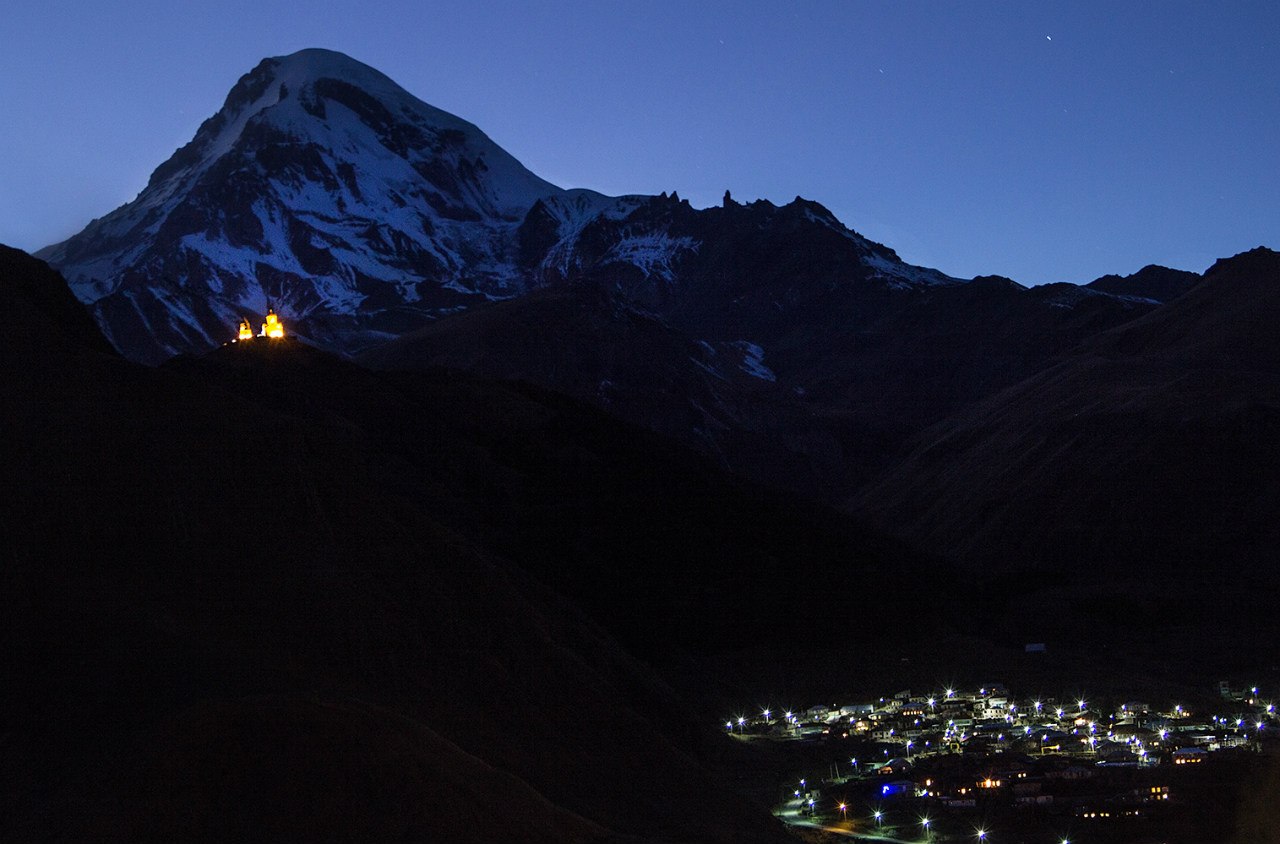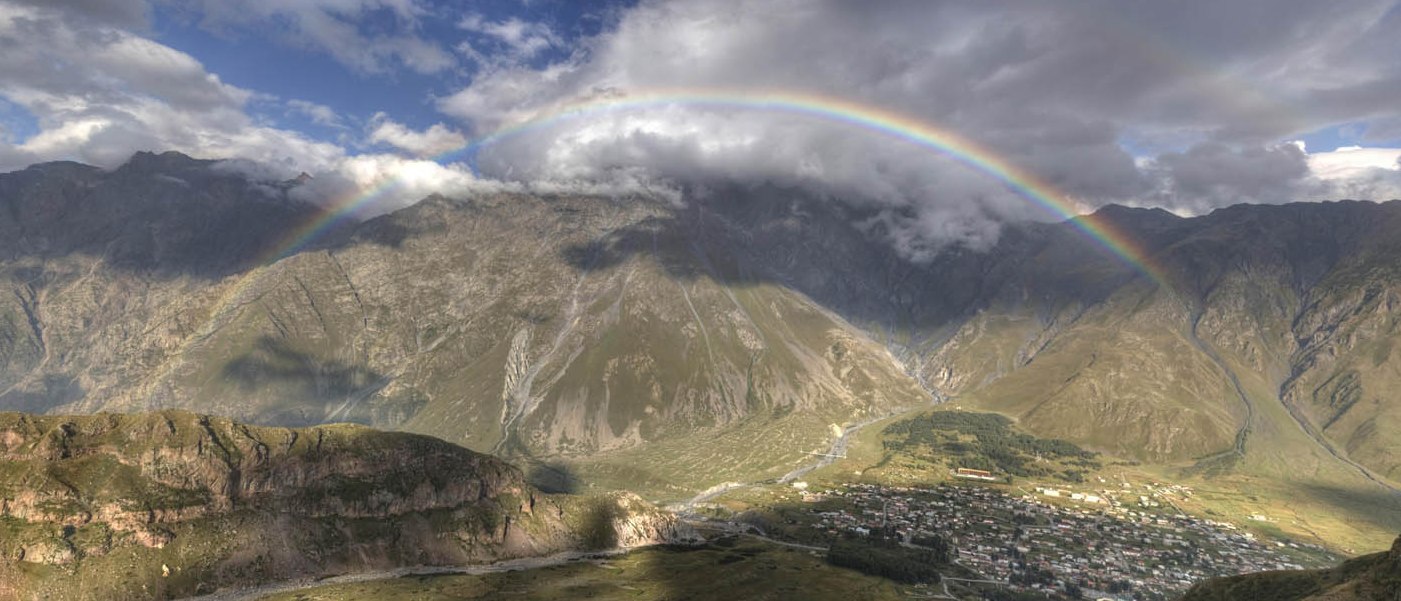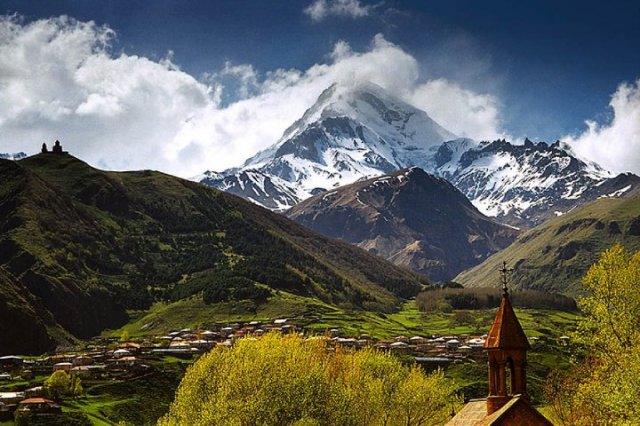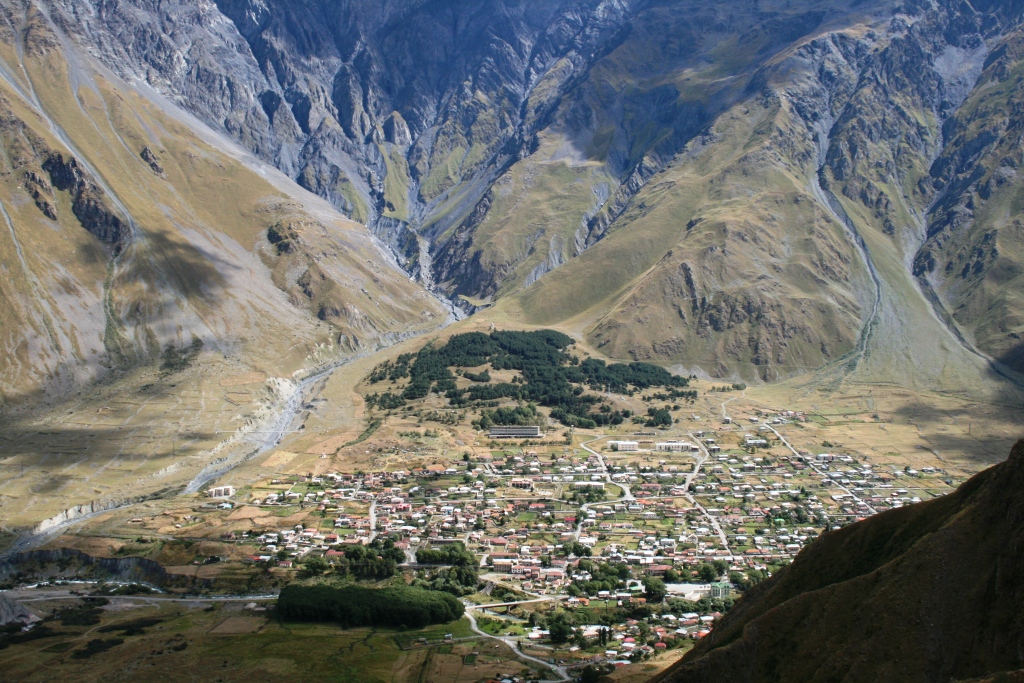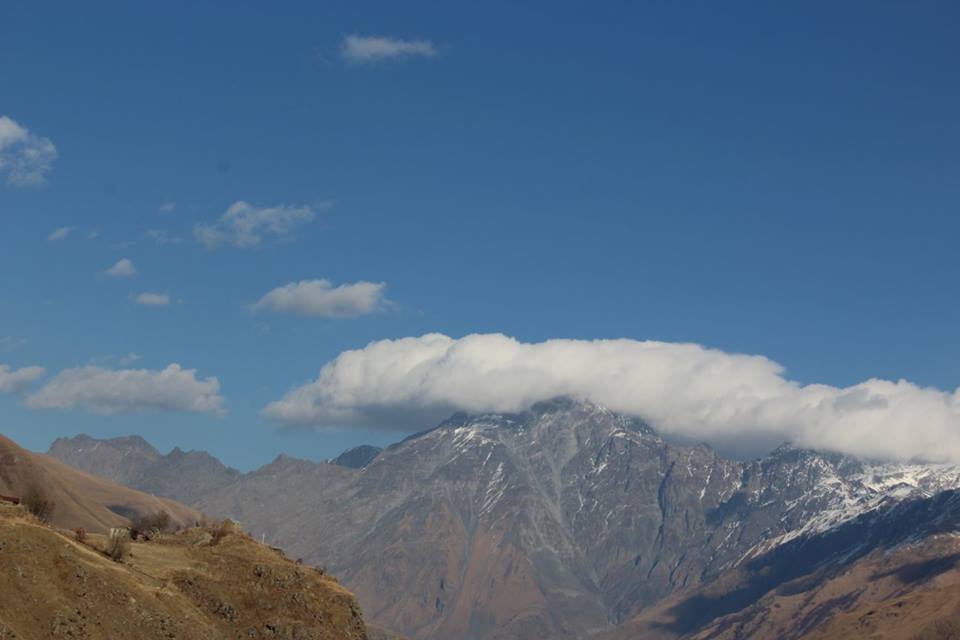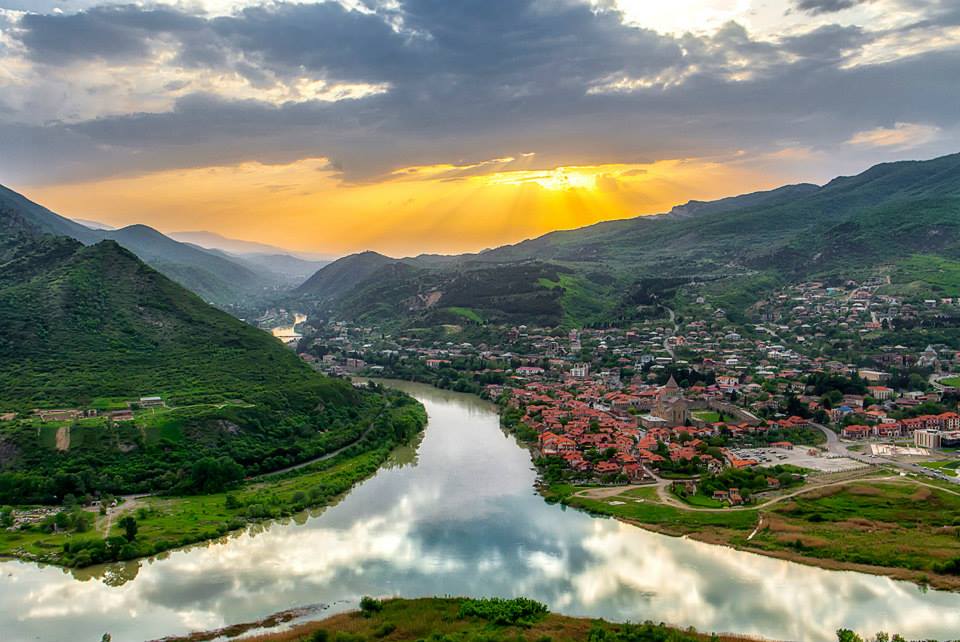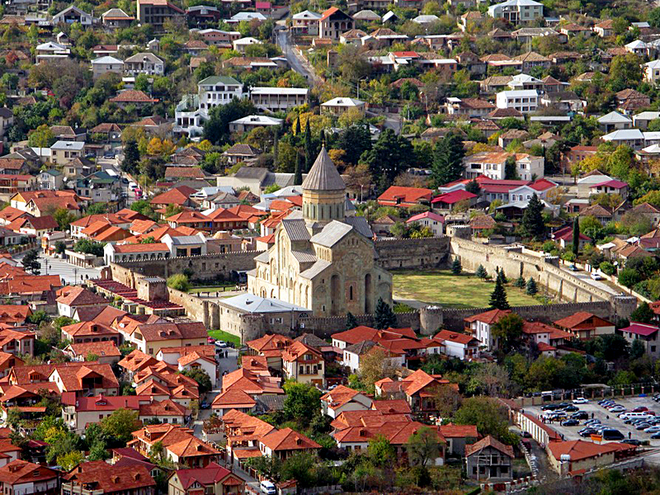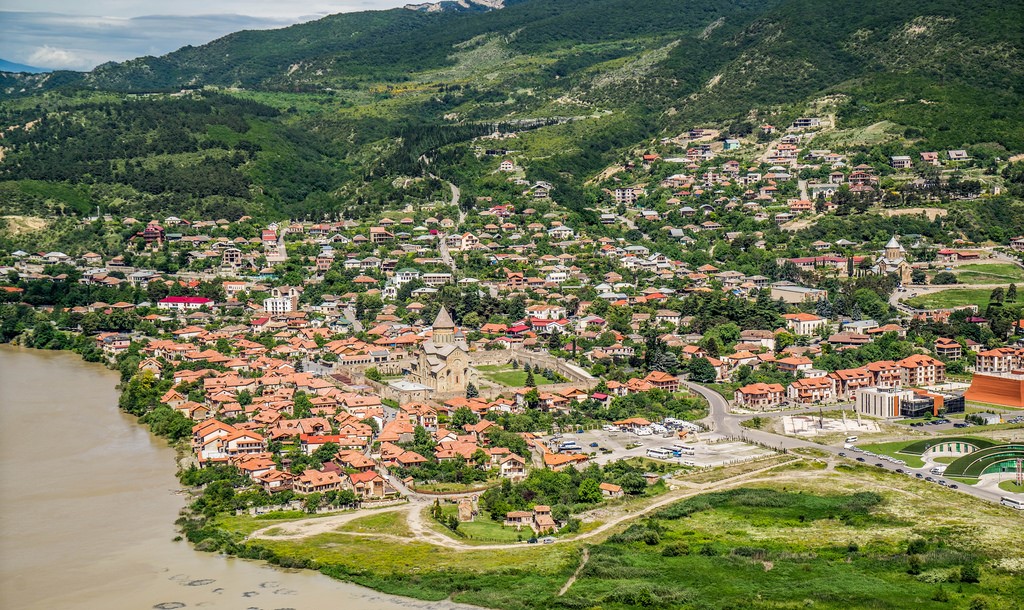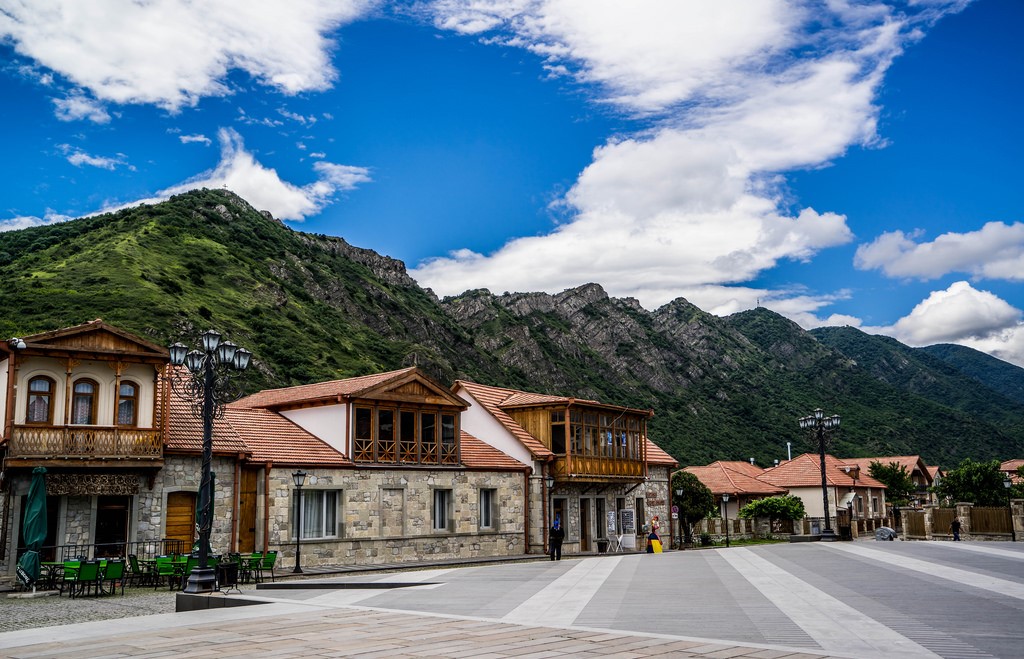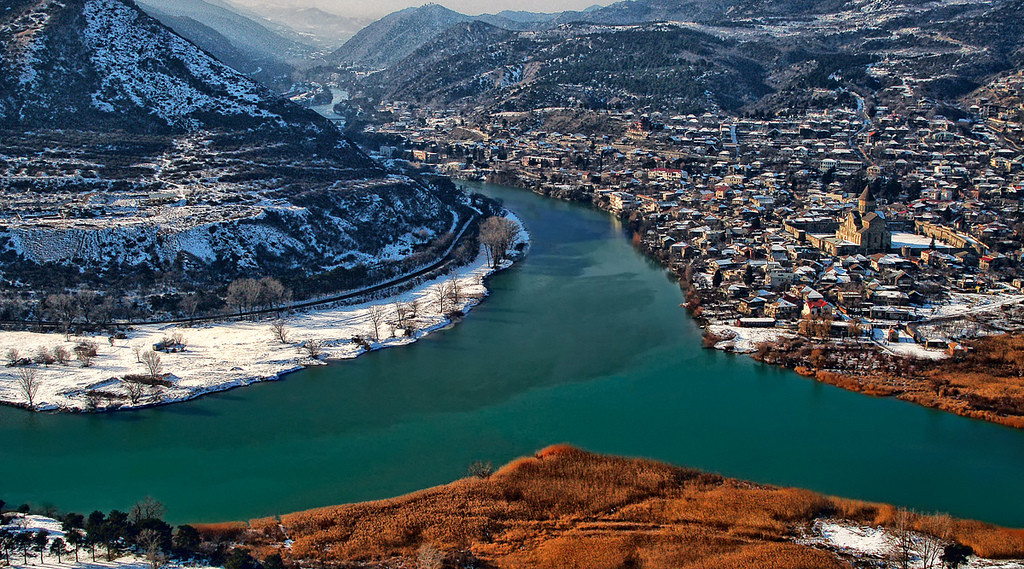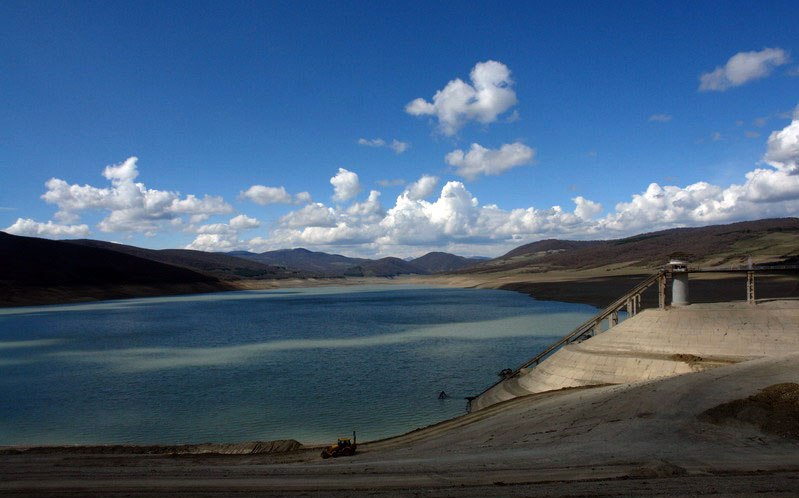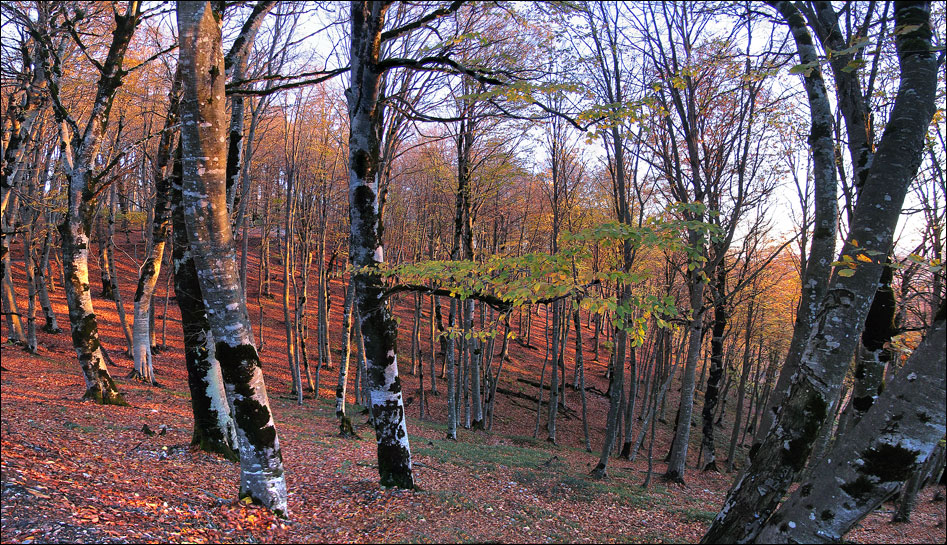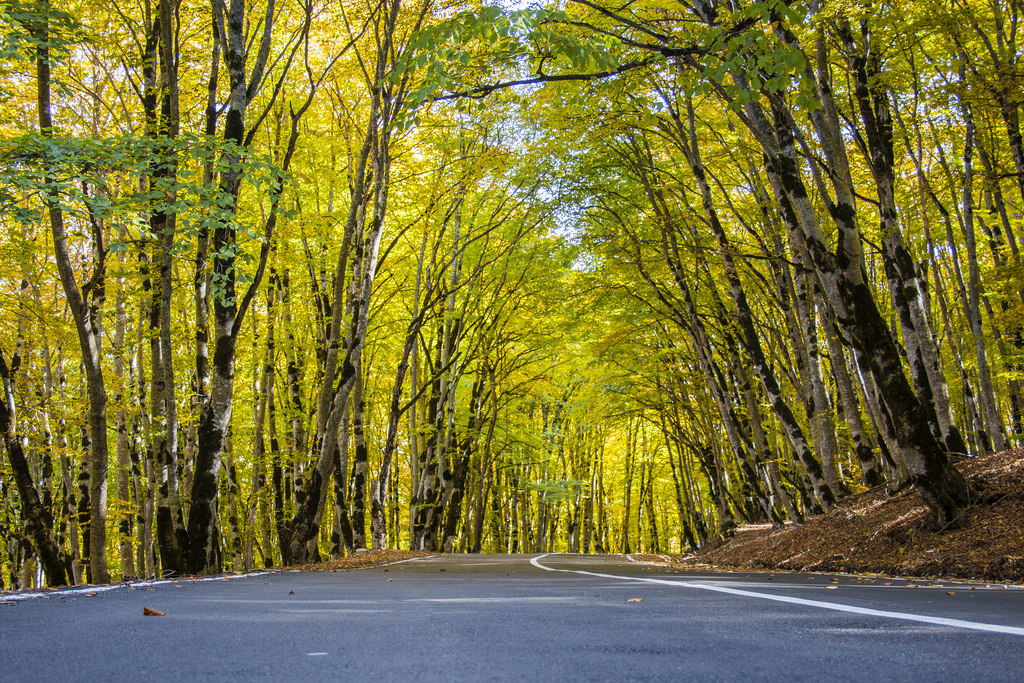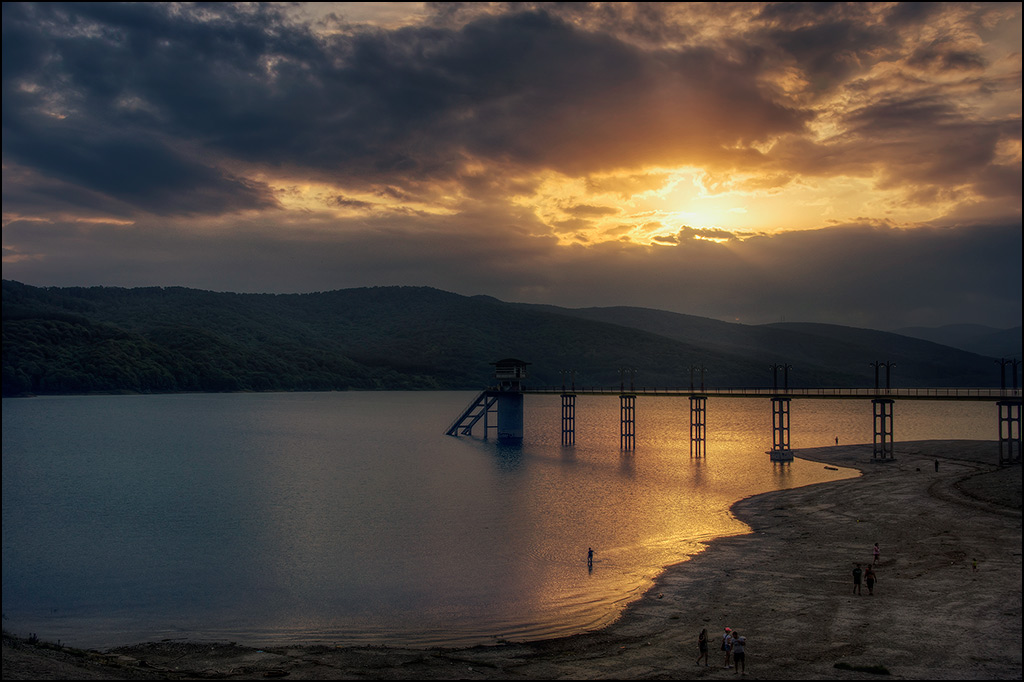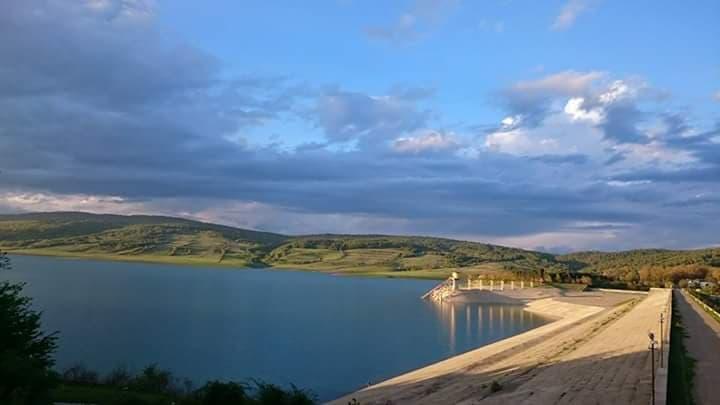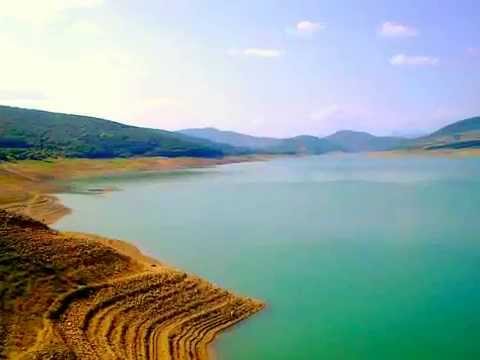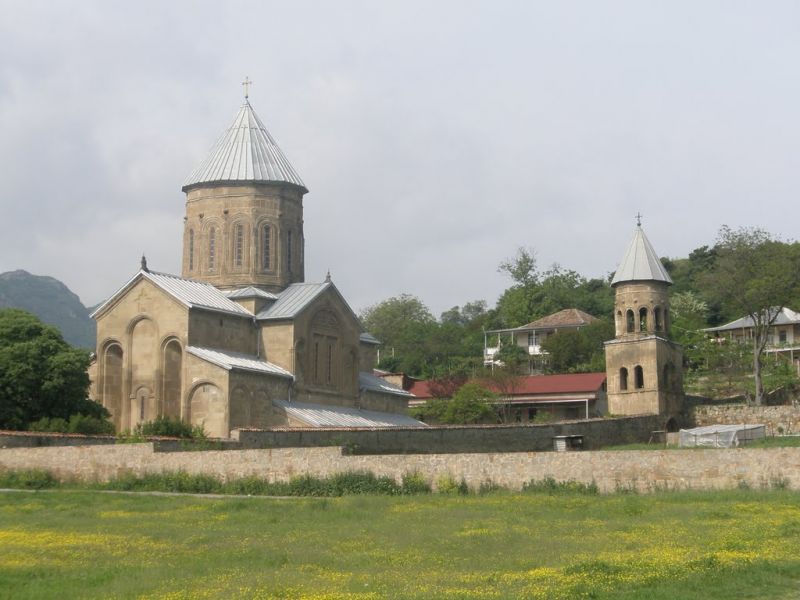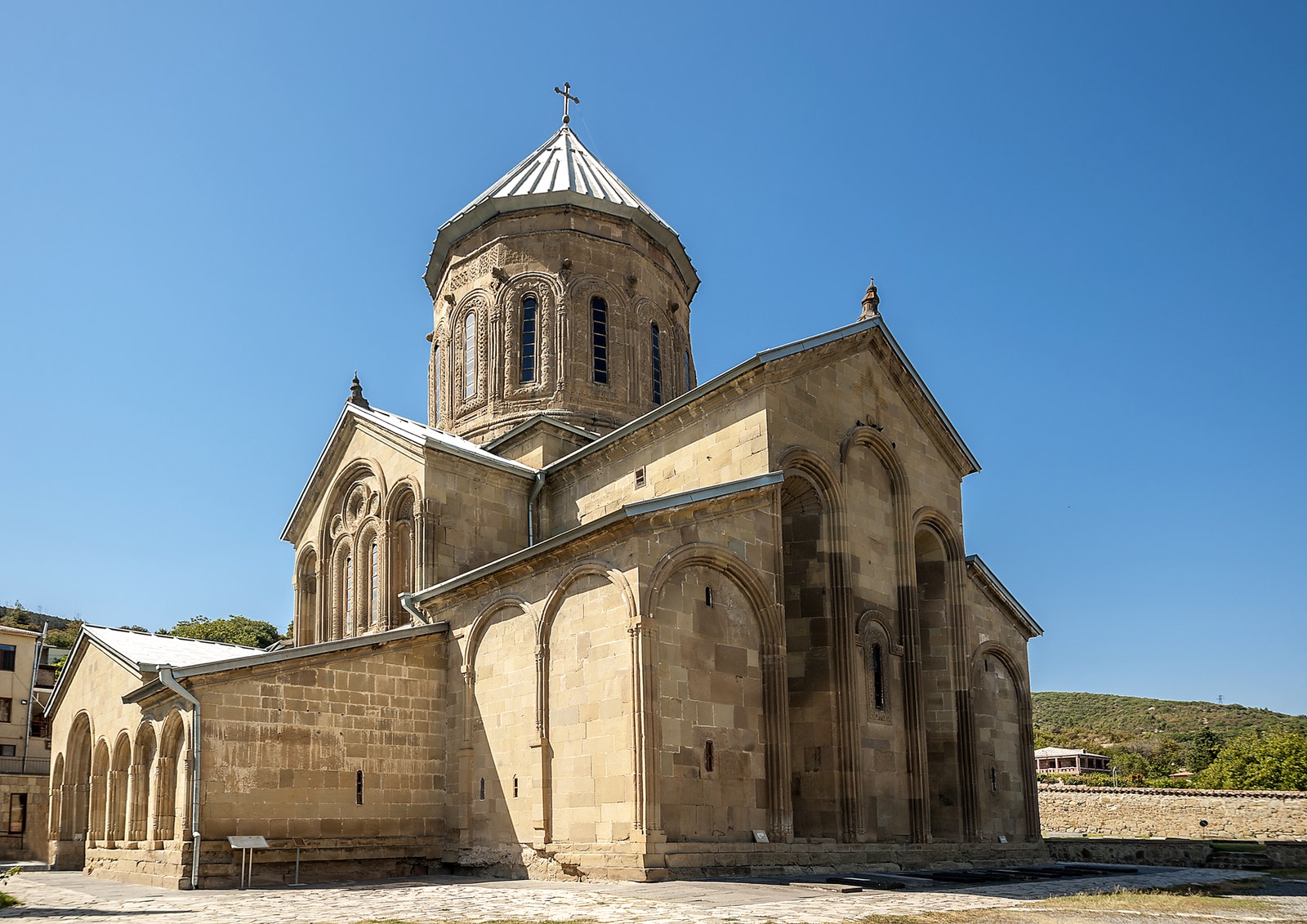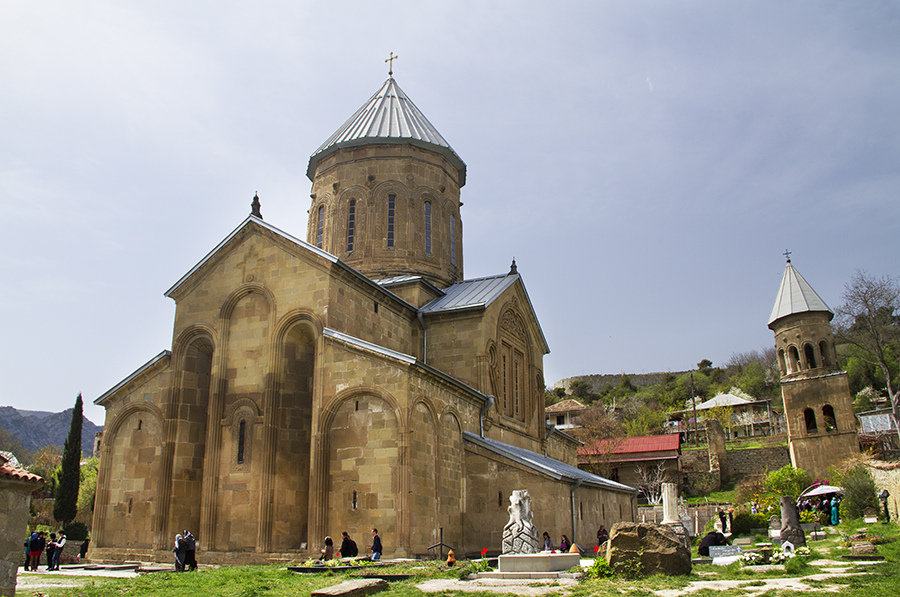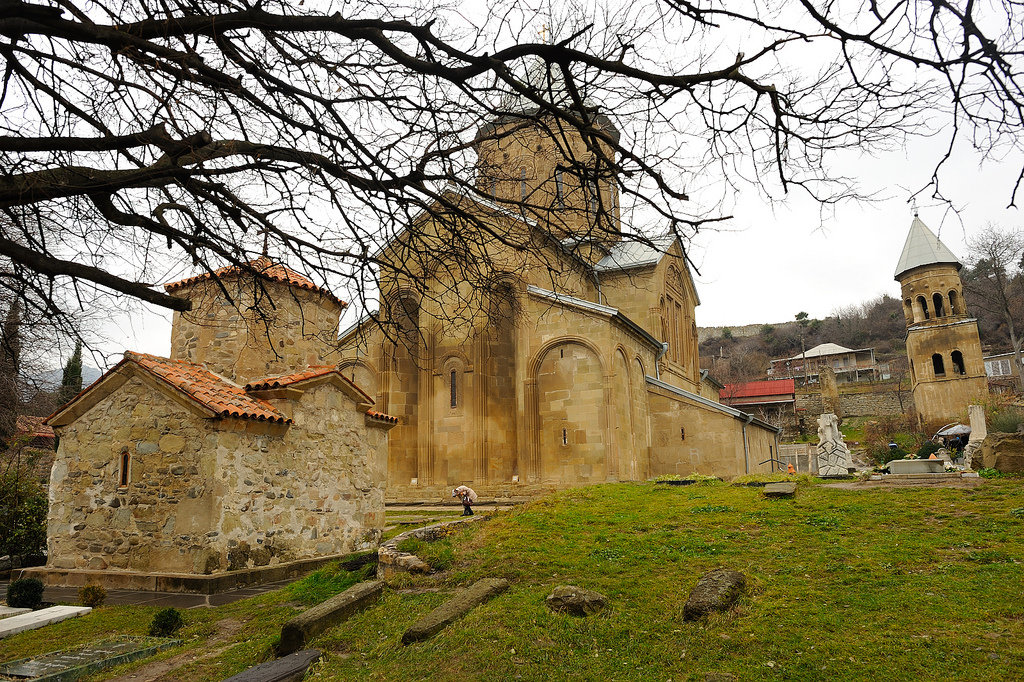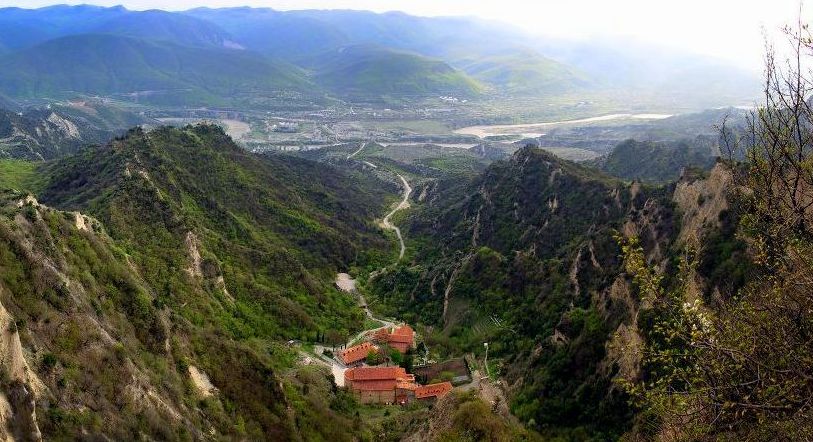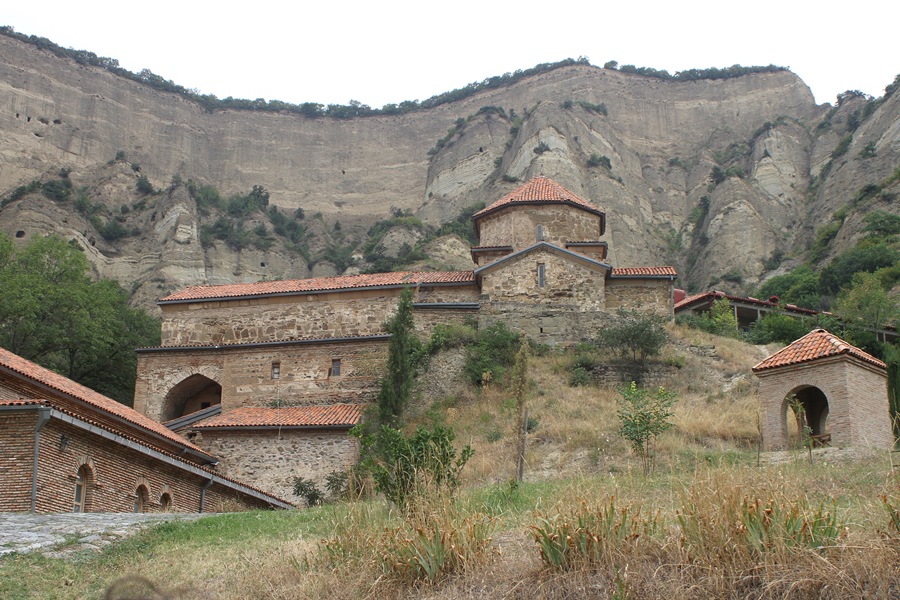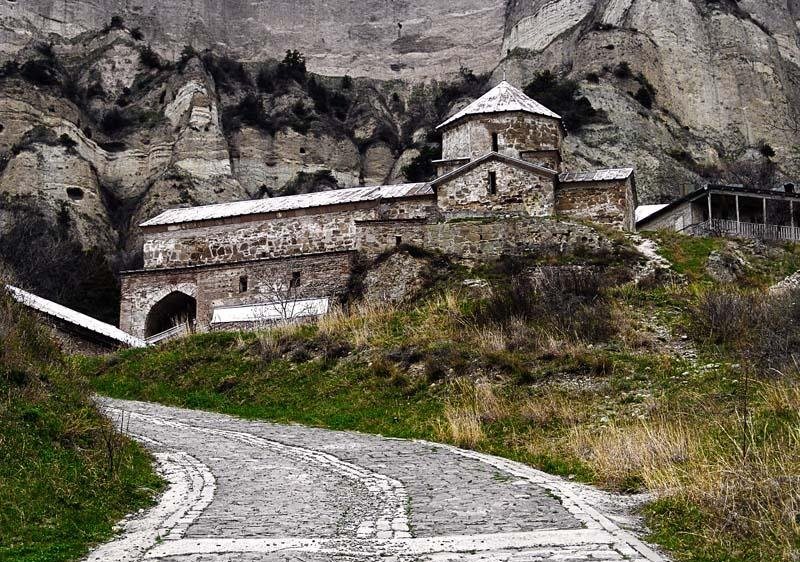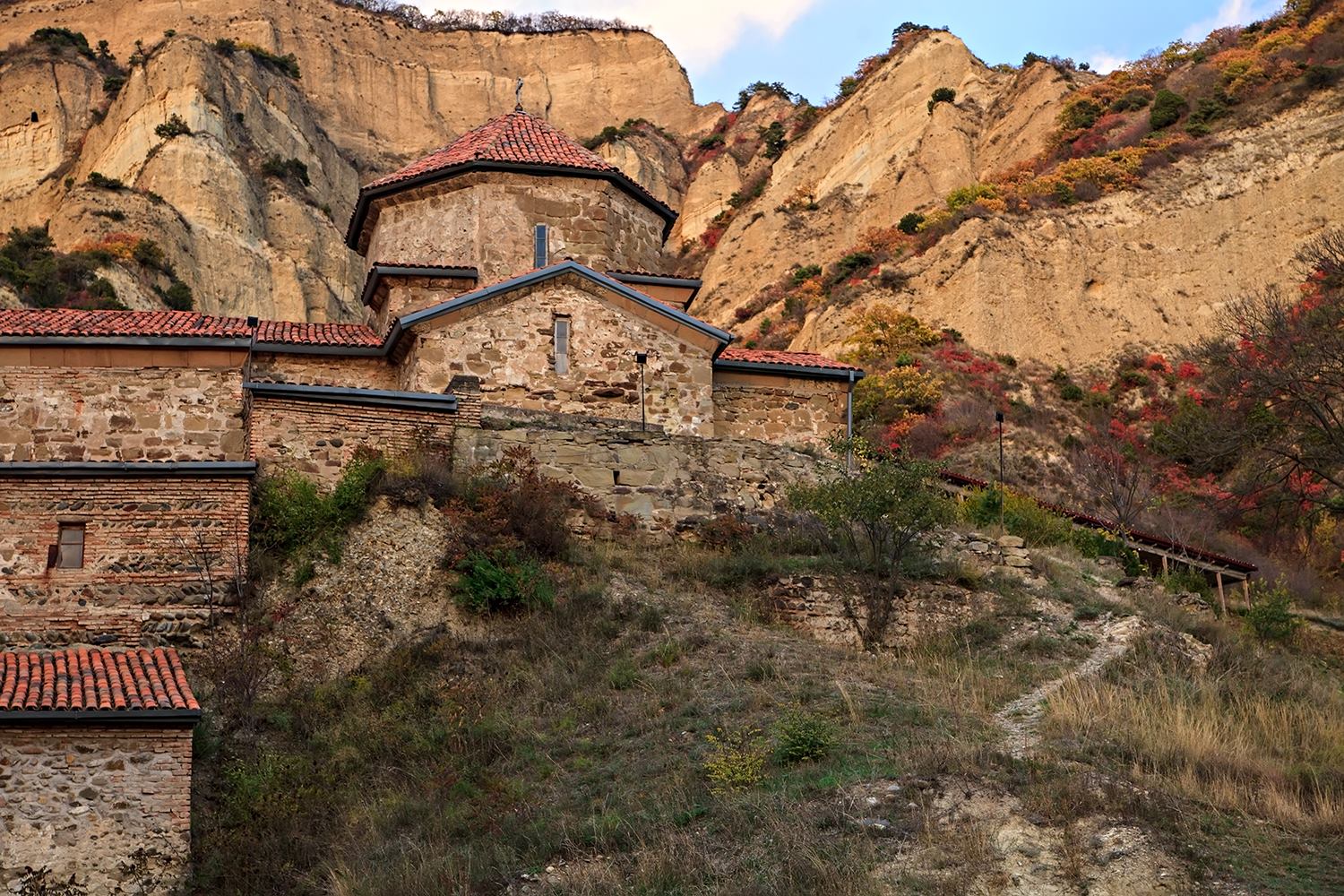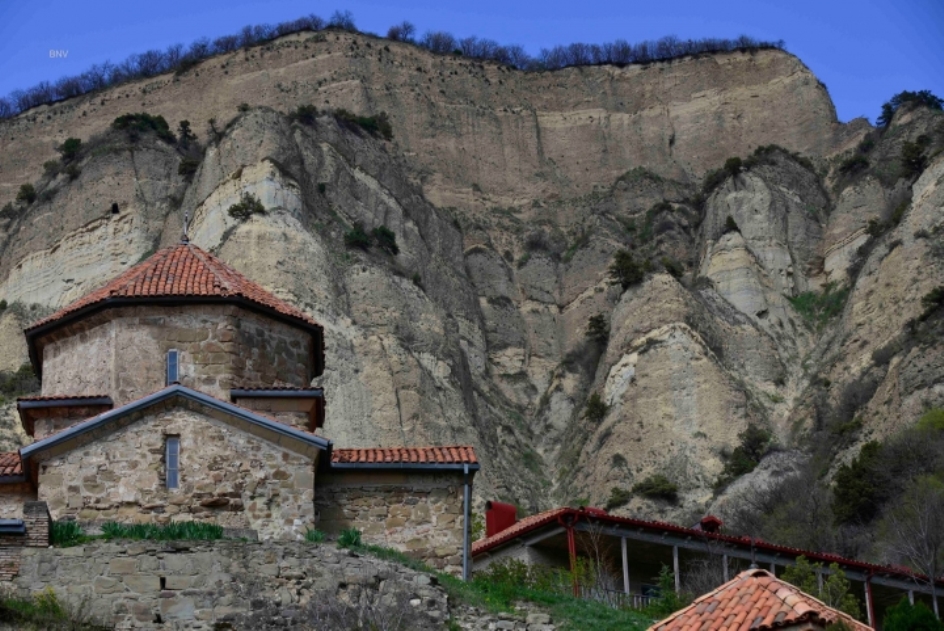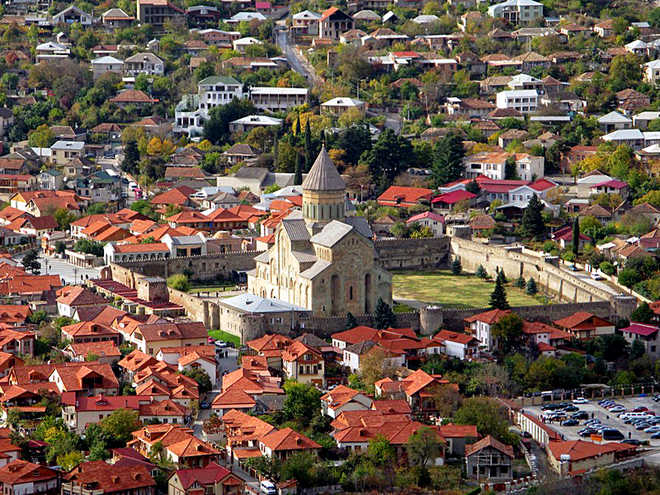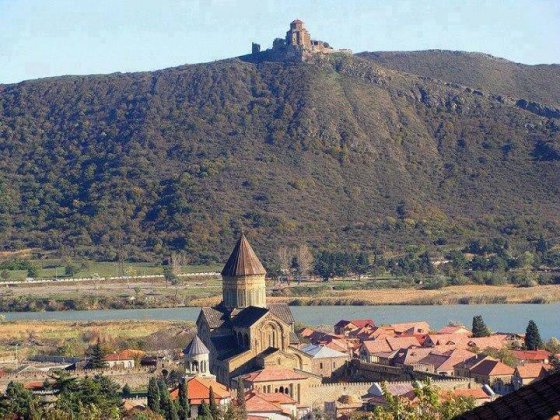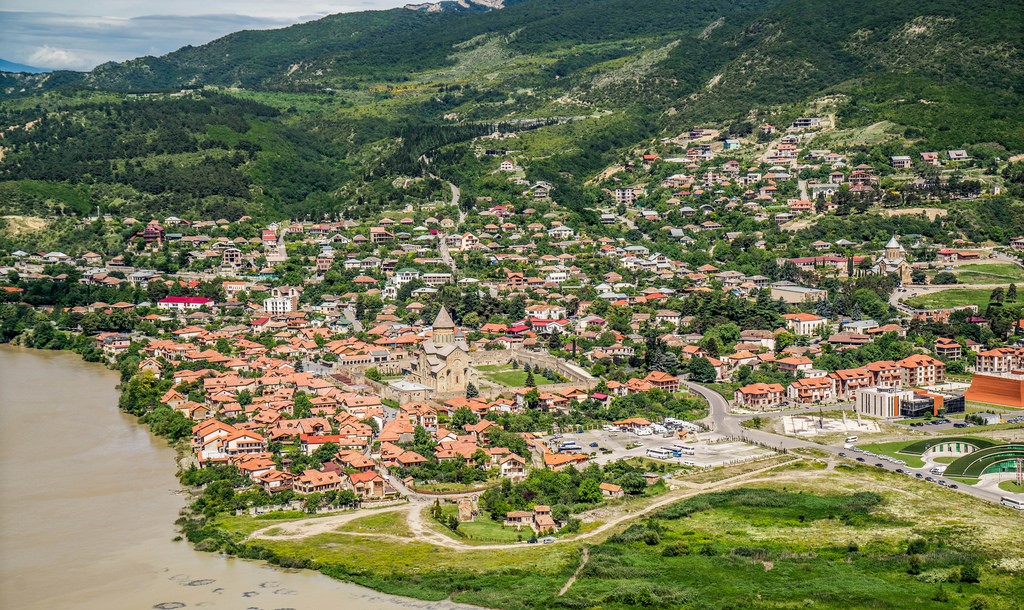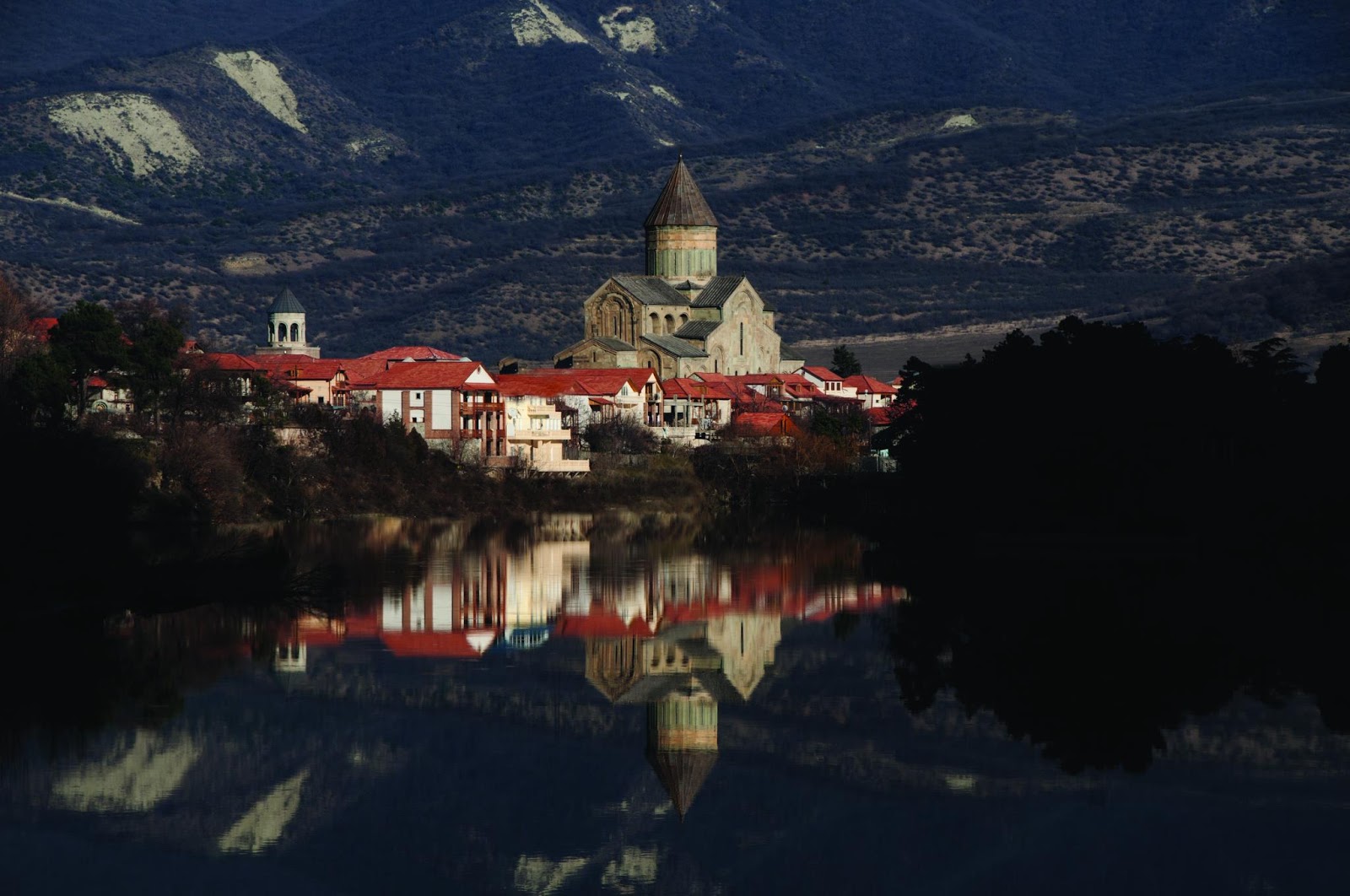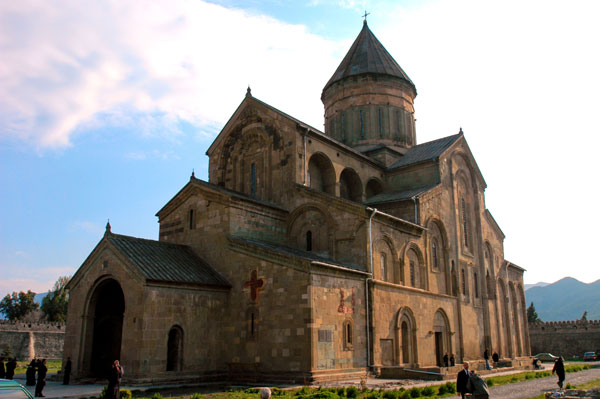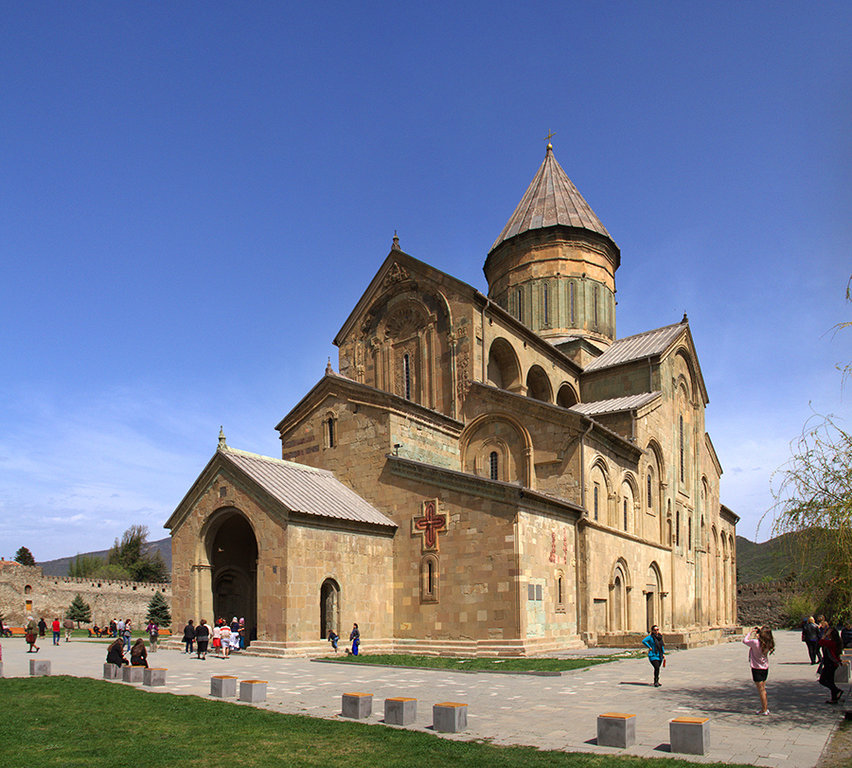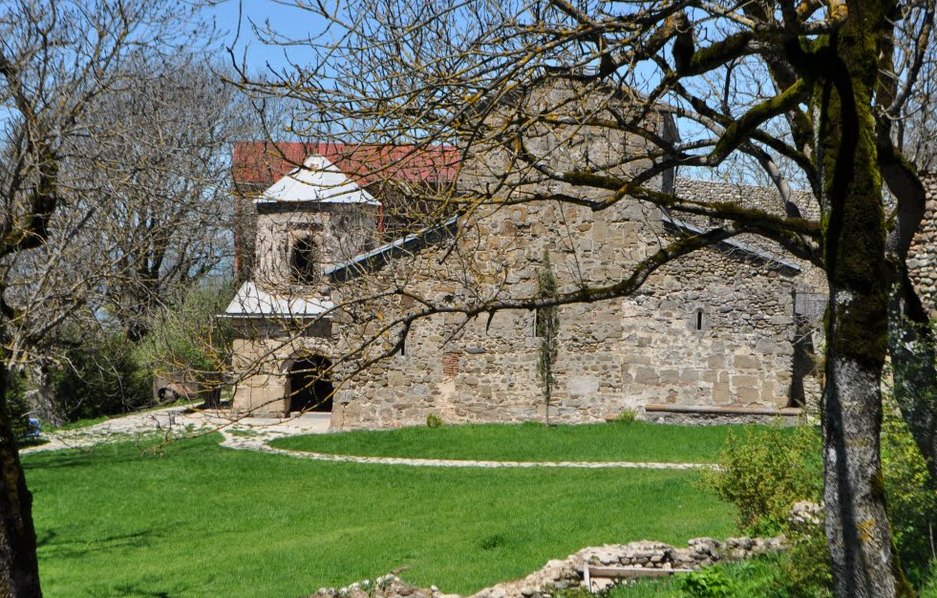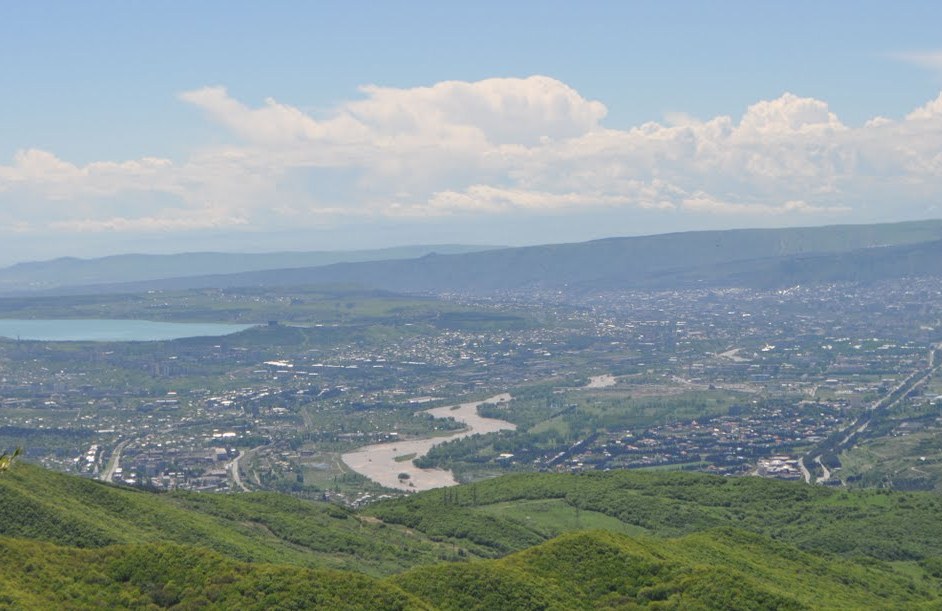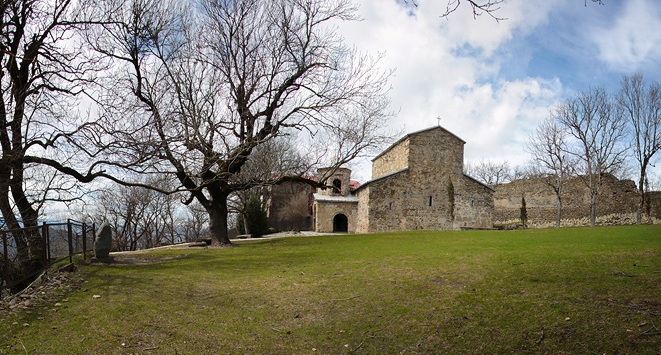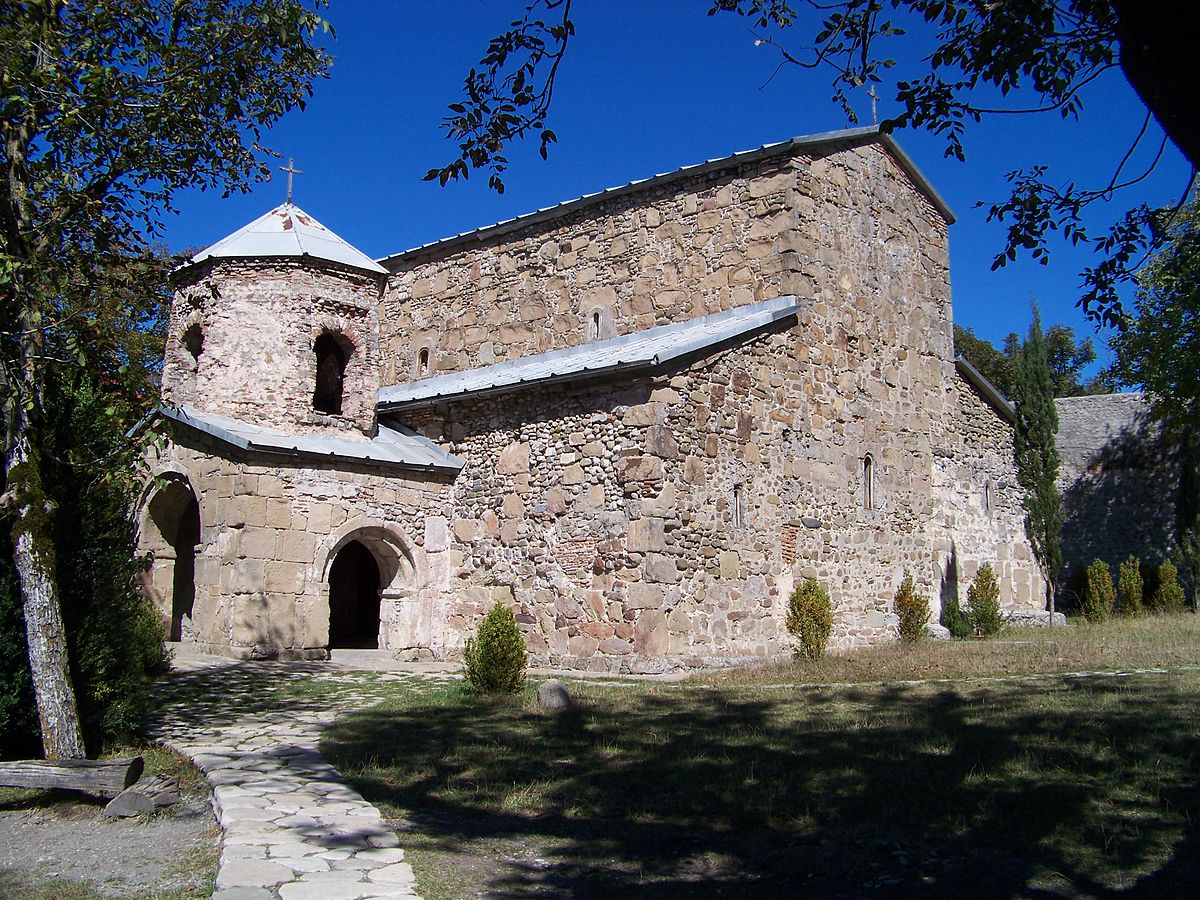ANANURI
Ananuri was a castle and seat of the eristavis (Dukes) of Aragvi, a feudal dynasty which ruled the area from the 13th century. The castle was the scene of numerous battles.
In 1739, Ananuri was attacked by forces from a rival duchy, commanded by Shanshe of Ksani and was set on fire. The Aragvi clan was massacred. However, four years later, the local peasants revolted against rule by the Shamshe, killing the usurpers and inviting King Teimuraz II to rule directly over them. However, in 1746, King Teimuraz was forced to suppress another peasant uprising, with the help of King Erekle II of Kakheti. The fortress remained in use until the beginning of the 19th century. In 2007, the complex has been on the tentative list for inclusion into the UNESCO World Heritage Site program.
ARMAZI
Armazi or Armaz was, according to the medieval Georgian Chronicles, the supreme deity in a pre-Christian pantheon of ancient Georgians of Kartli (Iberia of the Classical sources).
Georgian literary tradition credits the first king of Kartli, Pharnavaz I of Iberia (assumed to have reigned c. 302-237 BC), with the raising of the idol Armazi – reputedly named after him – on a mountain at his capital, and the construction of a similarly named fortress. The 9th/10th century hagiographic work Life of Nino describes the statue of Armazi as “a man of bronze standing; attached to his body was a golden suit of chain-armour, on his head a strong helmet; for eyes he had emeralds and beryls, in his hands he held a sabre glittering like lighting, and it turned in his hands.” The same account asserts that its subject, a 4th-century female baptizer of Georgians Saint Nino, witnessed the celebration of a great feast of dedication for the idol, and as she began praying, by the grace of Jesus the idol was burnt by lightning.
Beyond the medieval Georgian annals, and the toponym Armazi which has survived to this day, we lack contemporary records about pagan Georgian pantheon. However, the word “Armazi” itself suggests a connection to the Iranian and/or Anatolian cultures. Modern scholars are divided as to the origin of Armazi. It would appear to be connected to the Zoroastrian supreme god Ahura Mazdā (Middle Persian Ohrmazd, Armenian Aramazd) and contemporary archaeological evidence does suggest the penetration of Zoroastrianism in ancient Georgia. On the other hand, the Georgian historian, Giorgi Melikishvili, has advanced a theory identifying Armazi as the local variant of Arma, the god of the moon in the Hittite mythology. Academician Ivane Javakhishvili has earlier demonstrated that early Georgians venerated the moon as their chief deity, and this cult subsequently fused with the Christian St. George, which has been regarded as Georgia’s patron saint since the Middle Ages. Thus, Armazi might well have been a syncretic deity representing a combination of local Georgian, Iranian, and Anatolian elements.
DARIAL GORGE
GERGETI TRINITY CHURCH
The Gergeti Trinity Church was built in the 14th century, and is the only cross-cupola church in Khevi province. The separate belltower dates from the same period as the church itself. Its isolated location on top of a steep mountain surrounded by the vastness of nature has made it a symbol for Georgia. The 18th century Georgian author Vakhushti Batonishvili wrote that in times of danger, precious relics from Mtskheta, including Saint Nino’s Cross were brought here for safekeeping. During the Soviet era, all religious services were prohibited, but the church remained a popular tourist destination. The church is now an active establishment of the Georgian Orthodox and Apostolic Church
The church is a popular waypoint for trekkers in the area, and can be reached by a steep 3 hour climb up the mountain, or around 30 minutes by jeep up a rough mountain trail.
GUDAURI
JVARI MONASTERY
Jvari Monastery stands on the rocky mountaintop at the confluence of the Mtkvari and Aragvi rivers, overlooking the town of Mtskheta, which was formerly the capital of the Kingdom of Iberia.
According to traditional accounts, on this location in the early 4th century Saint Nino, a female evangelist credited with converting King Mirian III of Iberia to Christianity, erected a large wooden cross on the site of a pagan temple. The cross was reportedly able to work miracles and therefore drew pilgrims from all over the Caucasus. A small church was erected over the remnants of the wooden cross in c.545 named the “Small Church of Jvari”.
The present building, or “Great Church of Jvari”, is generally held to have been built between 590 and 605 by Erismtavari Stepanoz I. This is based on the Jvari inscriptions on its facade which mentions the principal builders of the church: Stephanos the patricius, Demetrius the hypatos, and Adarnase the hypatos. Professor Cyril Toumanoff disagrees with this view, identifying these individuals as Stepanoz II, Demetre (brother of Stepanoz I), and Adarnase II (son of Stepanoz II), respectively.
The importance of Jvari complex increased over time and attracted many pilgrims. In the late Middle Ages, the complex was fortified by a stone wall and gate, remnants of which still survive. During the Soviet period, the church was preserved as a national monument, but access was rendered difficult by tight security at a nearby military base. After the independence of Georgia, the building was restored to active religious use. Jvari was listed together with other monuments of Mtskheta in 1994 as a UNESCO World Heritage Site.
However, over the centuries the structures suffered damage from rain and wind erosion and inadequate maintenance. Jvari was listed in the 2004 World Monuments Watch list by the World Monuments Fund.
KAZBEGI
According to tradition, Stepantsminda, literally “Saint Stephan”, was named so after a Georgian Orthodox monk Stephan, who constructed a hermitage at this location on what later became the Georgian Military Highway. It came under the control of a local feudal magnate, the Chopikashvili clan, who were in charge of collecting tolls on travelers in the area in the late 18th century. After the expansion of the Russian Empire into the Kingdom of Georgia in the early 19th century, the people of the region revolted against Russian rule. However, the local lord Gabriel Chopikashvili, son of Kazi-Beg, remained steadfast in his loyalty to Russia and helped to suppress the revolt. In return, he was promoted to officer in the Russian Army. He adopted the surname Kazbegi, and the village under his control was also frequently referred to as “Kazbegi”. The name was officially changed to Kazbegi already under the Soviet rule in 1925. Gabriel Chopikashvili-Kazbegi’s grandson was the famed Georgian writer Alexander Kazbegi, who was born in this town. In 2006, the town reverted to its original name of Stepantsminda.
MTSKHETA
Due to its historical significance and several cultural monuments, the “Historical Monuments of Mtskheta” became a UNESCO World Heritage Site in 1994. As the birthplace and one of the most vibrant centers of Christianity in Georgia, Mtskheta was declared as the “Holy City” by the Georgian Orthodox Church in 2014
Mtskheta was founded in the 5th century BC. It was capital of the early Georgian Kingdom of Iberia (Kartli) from the 3rd century BC to the 5th century AD. It was a site of early Christian activity, and the location where Christianity was proclaimed the state religion of Kartli in 337. It remains the headquarters of the Georgian Orthodox Church.
King Dachi I Ujarmeli (early 6th century AD), who was the successor of Vakhtang I Gorgasali, moved the capital from Mtskheta to the more easily defensible Tbilisi according to the will left by his father. However, Mtskheta continued to serve as the coronation and burial place for most kings of Georgia until the end of the kingdom in the 19th century.
The old city lies at the confluence of the rivers Mtkvari and Aragvi. The rare blend of cultural values had ruled in this part of the world since the Bronze Age until prosperous Christian era over the unique eclectic lifestyle creating the mood of the town which is as old as the history of Georgia. Mtskheta is the most religious city of Georgia as it has been the shrine of pagan idols since times immemorial and it is where Christianity in Georgia takes its origin.[citation needed]
In recognition of its role in the Georgian Christian history, Mtskheta was granted the status of a “Holy City” by Catholicos-Patriarch Ilia II of Georgia in accordance of the written testament of his 11th-century predecessor Melchizedek I of Georgia.
SABADURI FOREST
SAMTAVRO
SHIO-MGVIME MONASTERY
According to a historic tradition, the first monastic community at this place was founded by the 6th-century monk Shio, one of the Thirteen Assyrian Fathers who came to Georgia as Christian missionaries. St. Shio is said to have spent his last years as a hermit in a deep cave near Mtskheta subsequently named Shiomghvime (“the Cave of Shio”) after him. The earliest building – the Monastery of St. John the Baptist – a cruciform church, very plain and strict in its design, indeed dates to that time, c. 560s-580s, and the caves curved by monks are still visible around the monastery and along the road leading to the complex. The church has an octagonal dome covered with a conic floor and once housed a masterfully ornate stone iconostasis which is now on display at the Art Museum of Georgia in Tbilisi. The monastery was somewhat altered in the 11th and 18th centuries, but has largely retained its original architecture.
The Upper Church (zemo eklesia) named after the Theotokos is a central part of the Shio-Mgvime complex constructed at the verge of the 12th century at the behest of King David IV of Georgia. Initially a domed church, it was subsequently destroyed by a foreign invasion and restored, in 1678, as a basilica. A refectory was built between the 12th and 17th centuries and directly communicates with the Cave of St. Shio. A 12th-century small chapel adorned with medieval murals stands separately on a nearby hill.
An archaeological expedition revealed, in 1937, a 2 km long aqueduct supplying the monastic communities from the nearby village of Skhaltba, and chronicled in 1202 as being constructed by Bishop Anton of Chkondidi, a minister at Queen Thamar’s court.
SVETITSKHOVELI CATHEDRAL
Known as the burial site of Christ’s mantle, Svetitskhoveli has long been one of the principal Georgian Orthodox churches and is among the most venerated places of worship in the region. The present structure was completed in 1029 by the medieval Georgian architect Arsukisdze, although the site itself dates back to the early fourth century.
Svetitskhoveli is considered an endangered cultural landmark; it has survived a variety of adversities, and many of its priceless frescoes have been lost due to being whitewashed by the Russian Imperial authorities.
ZEDAZENI MONASTERY
The monastery was founded by Saint John, one of the Holy Assyrian Fathers of Georgia whose mission was to strengthen Christianity in the region.
Saint John founded the monastery in the 540s (6th century) on Zedazeni mountain, where prior to Christianity used to be a cult of Zaden, the idol of fruitfulness.

